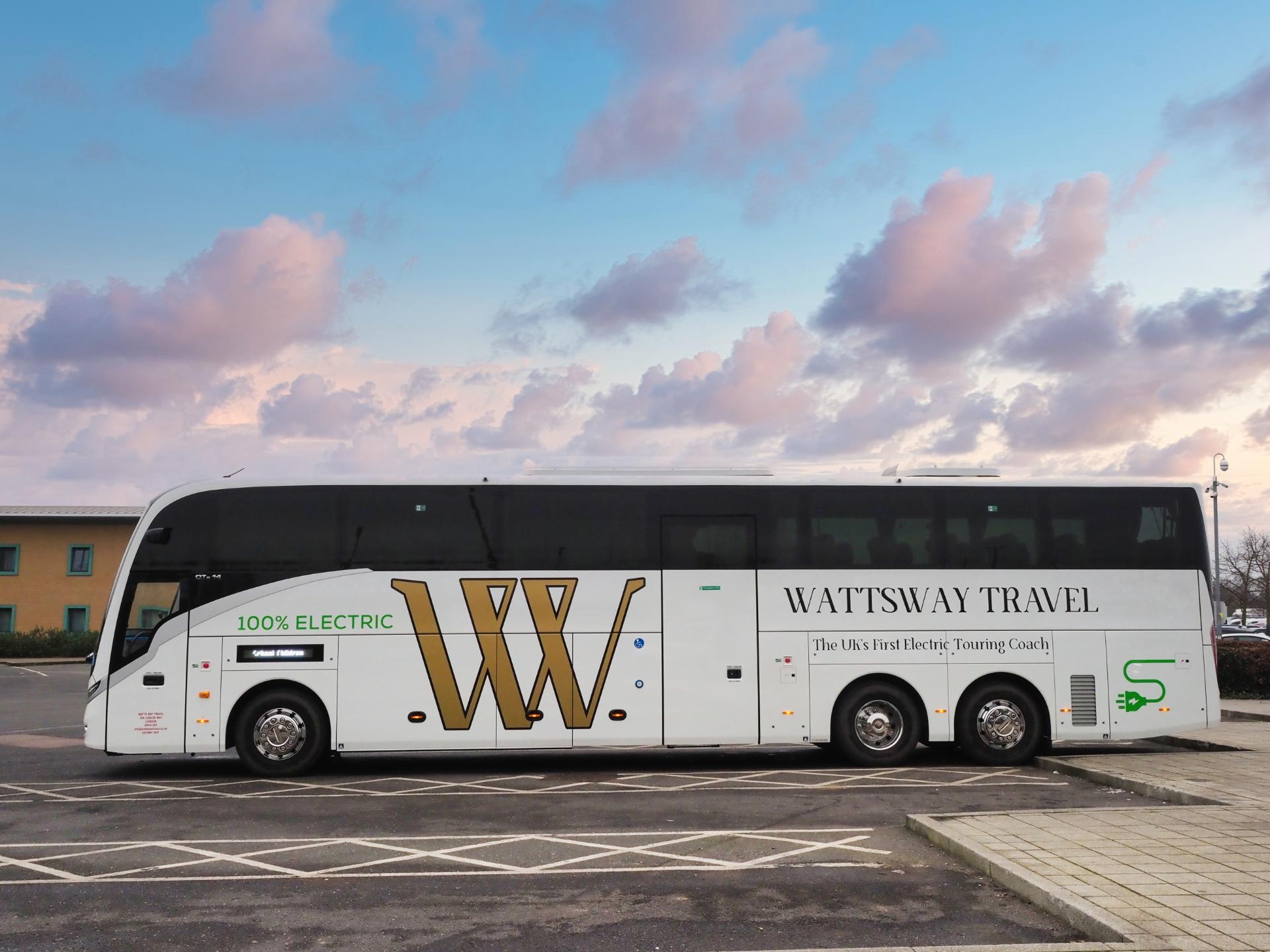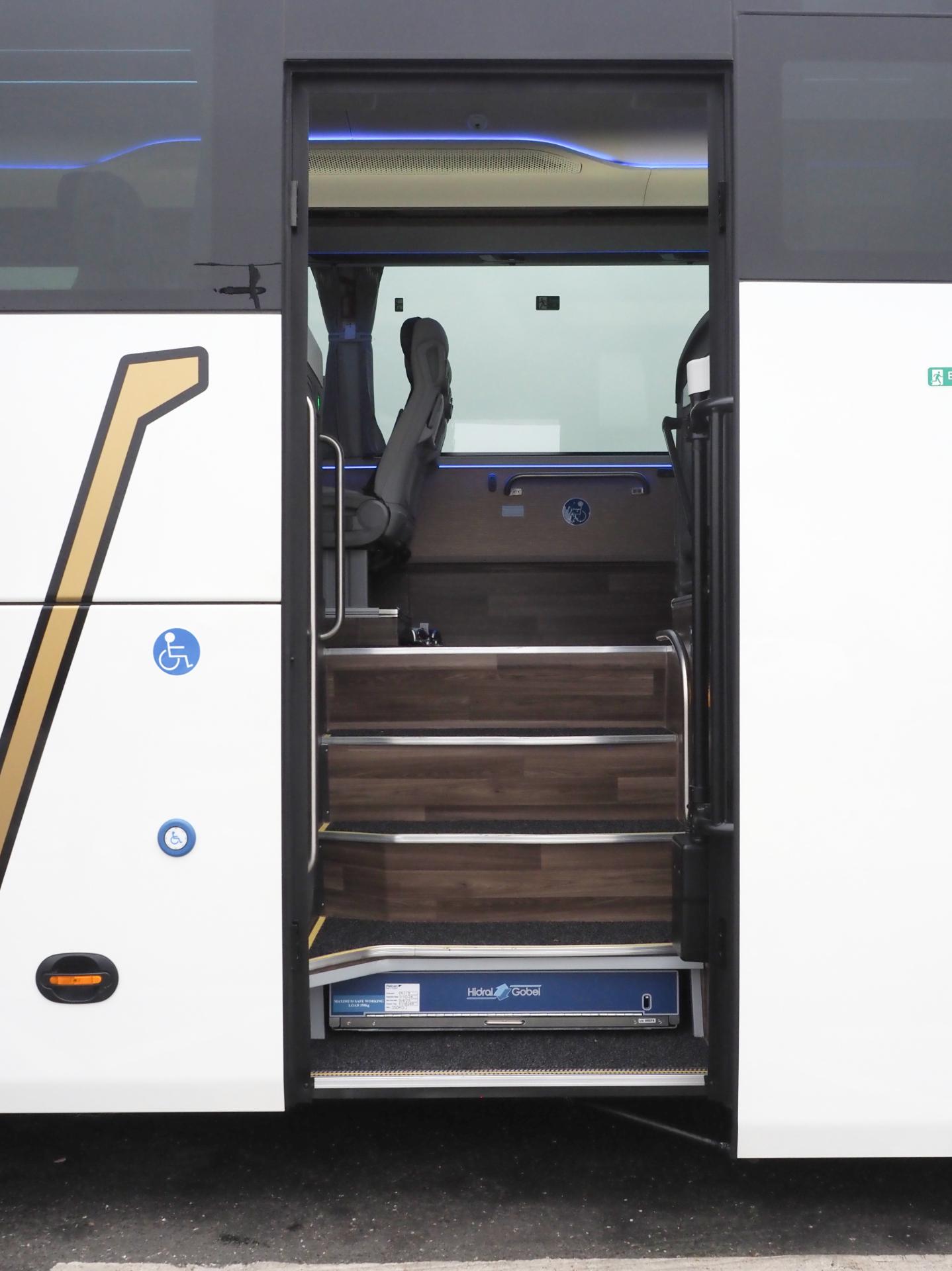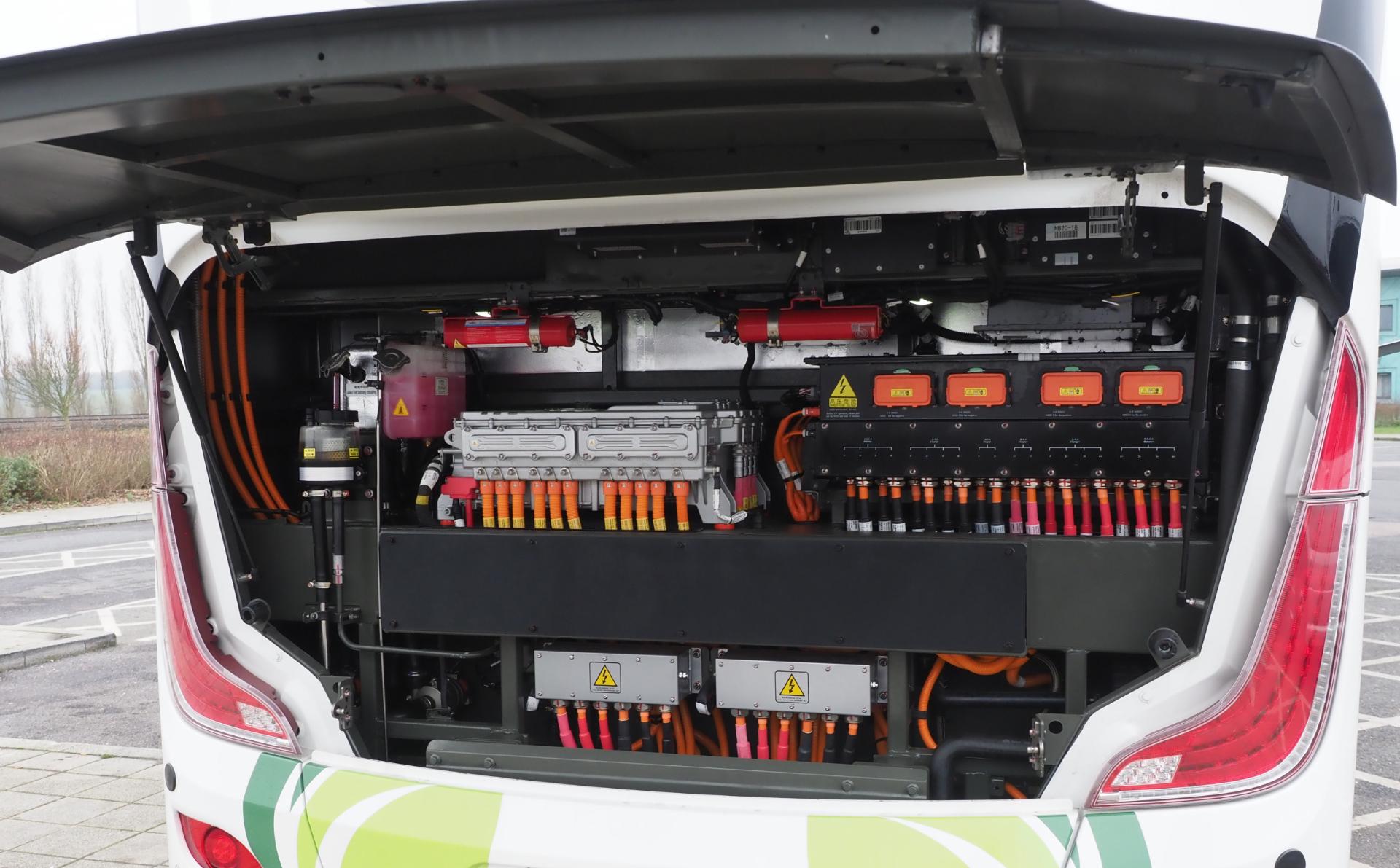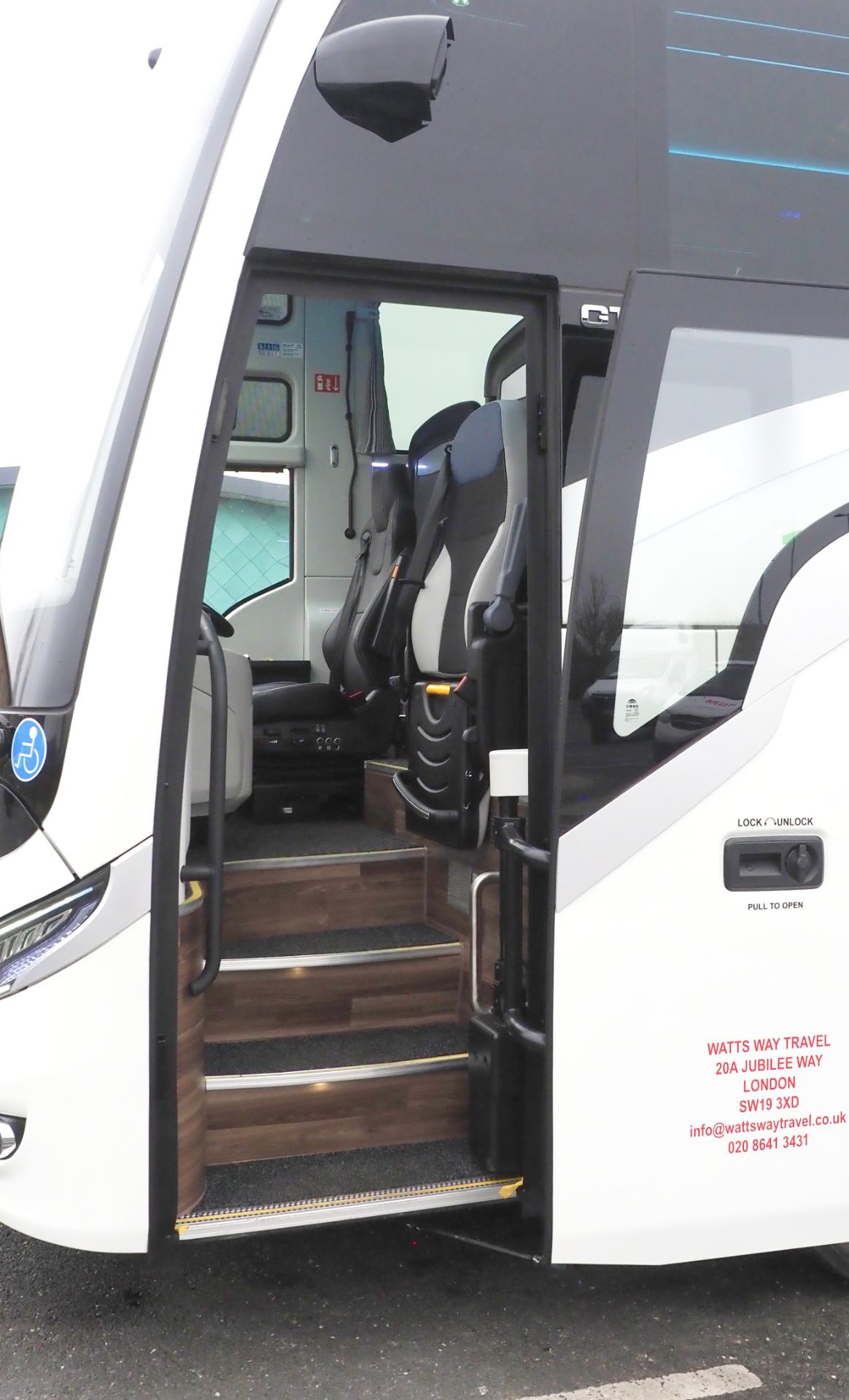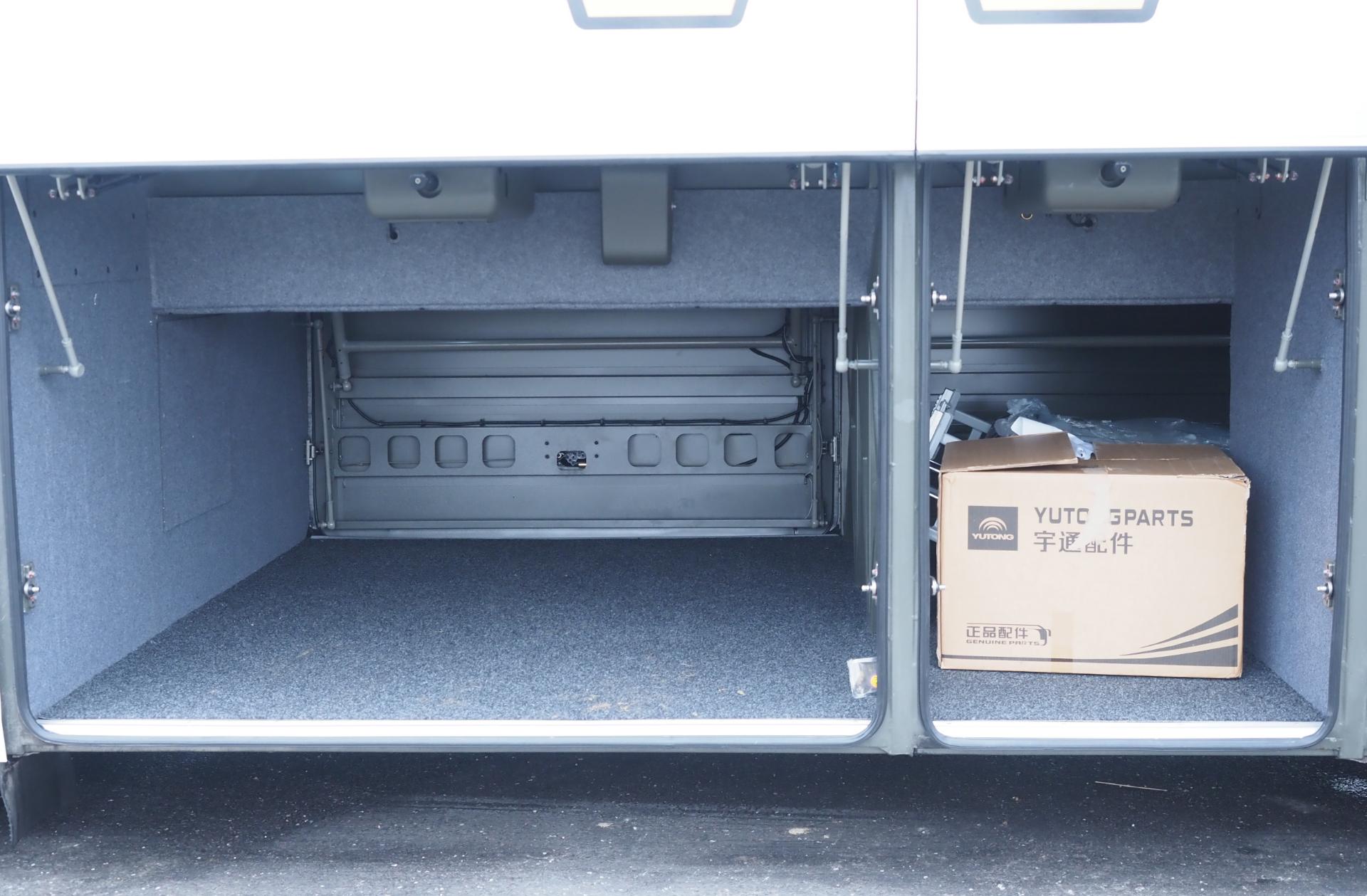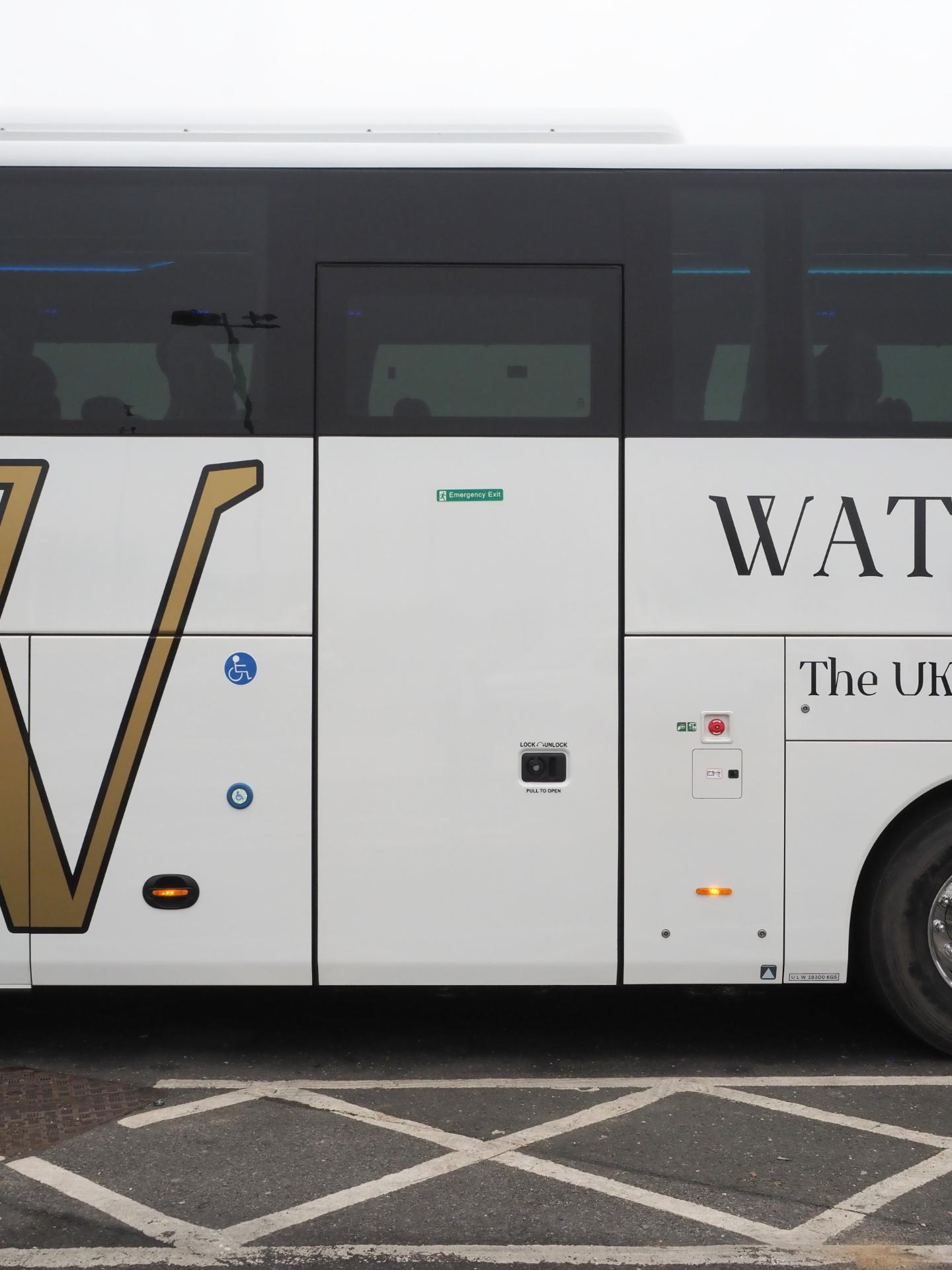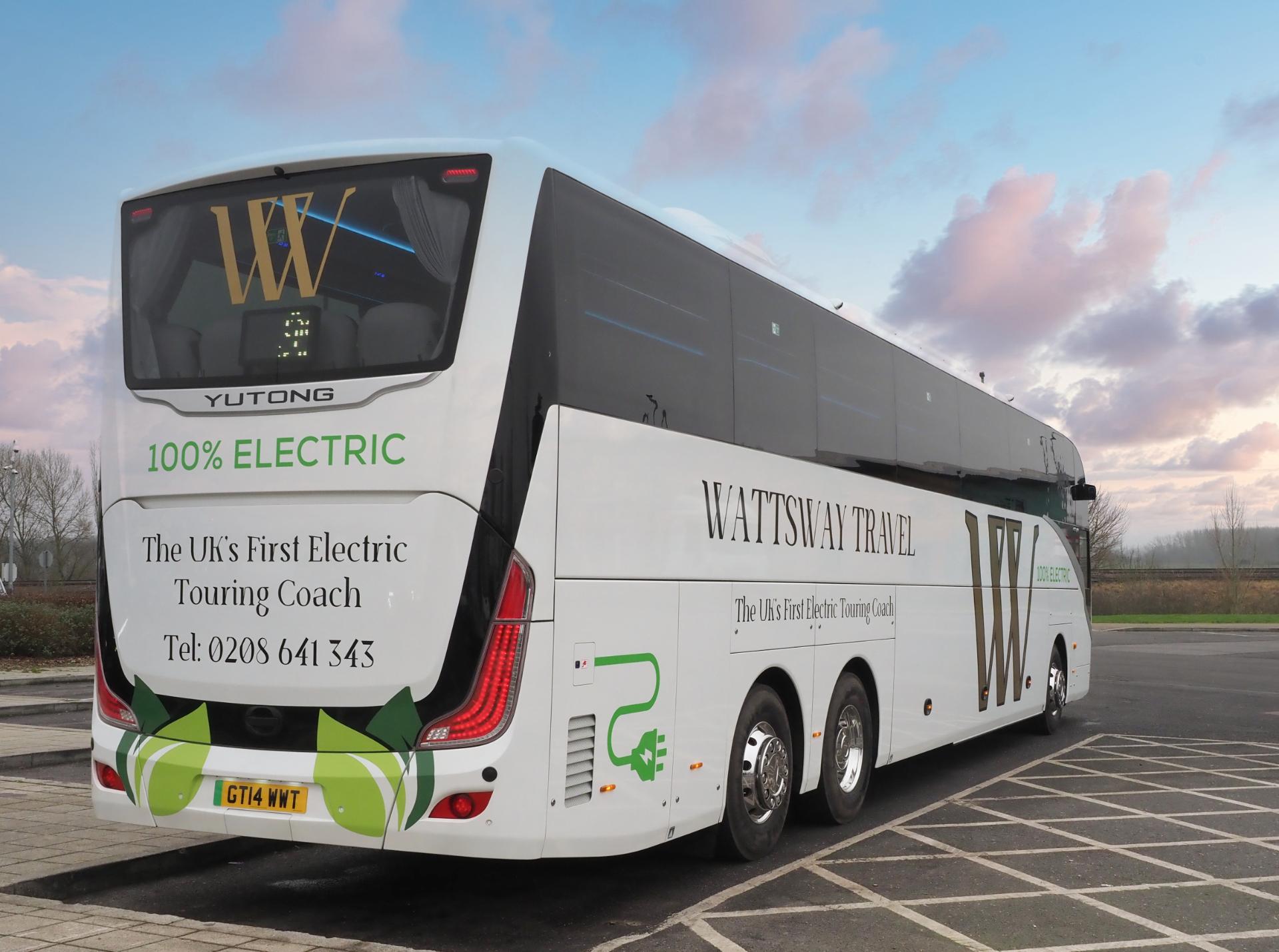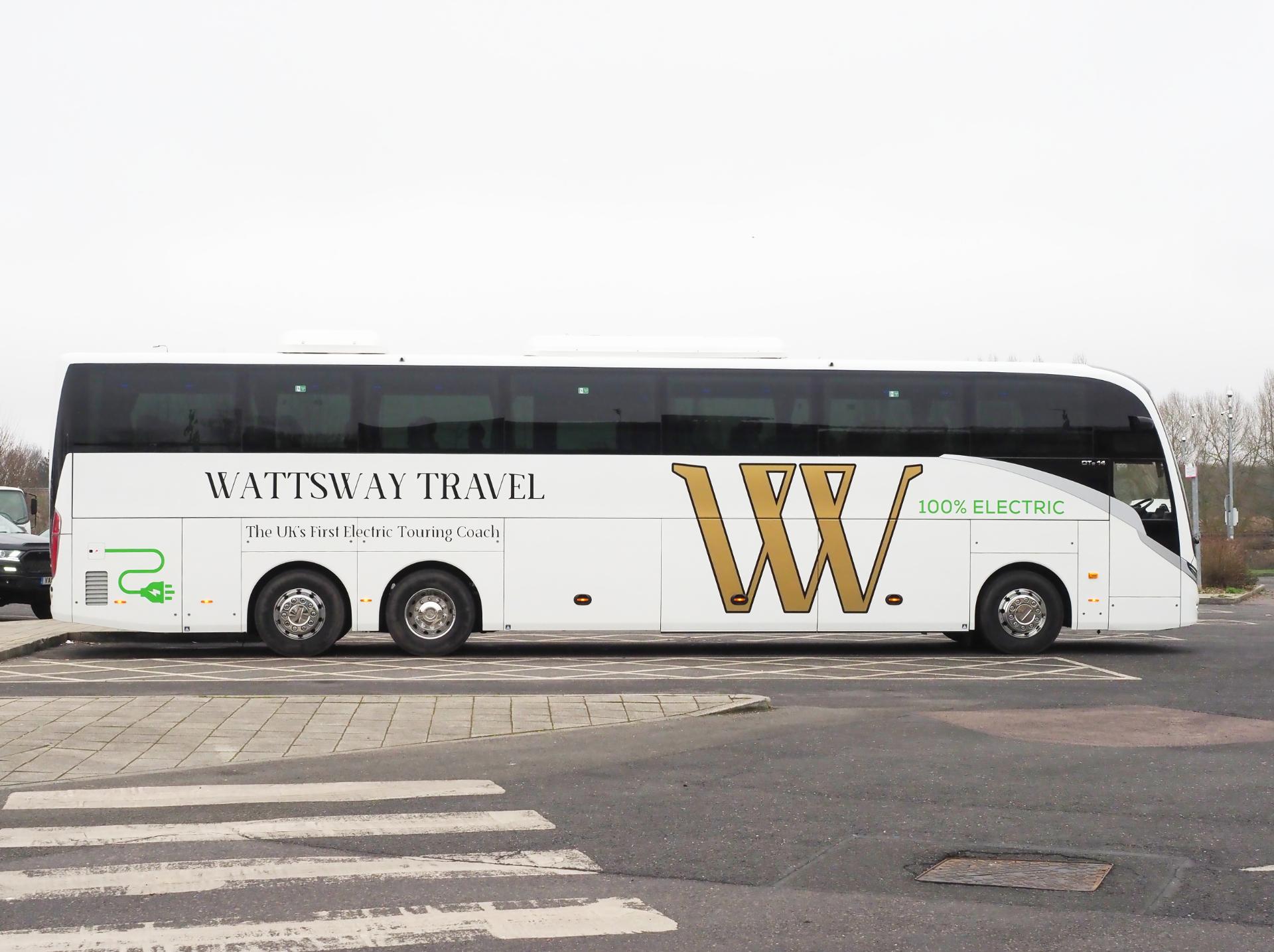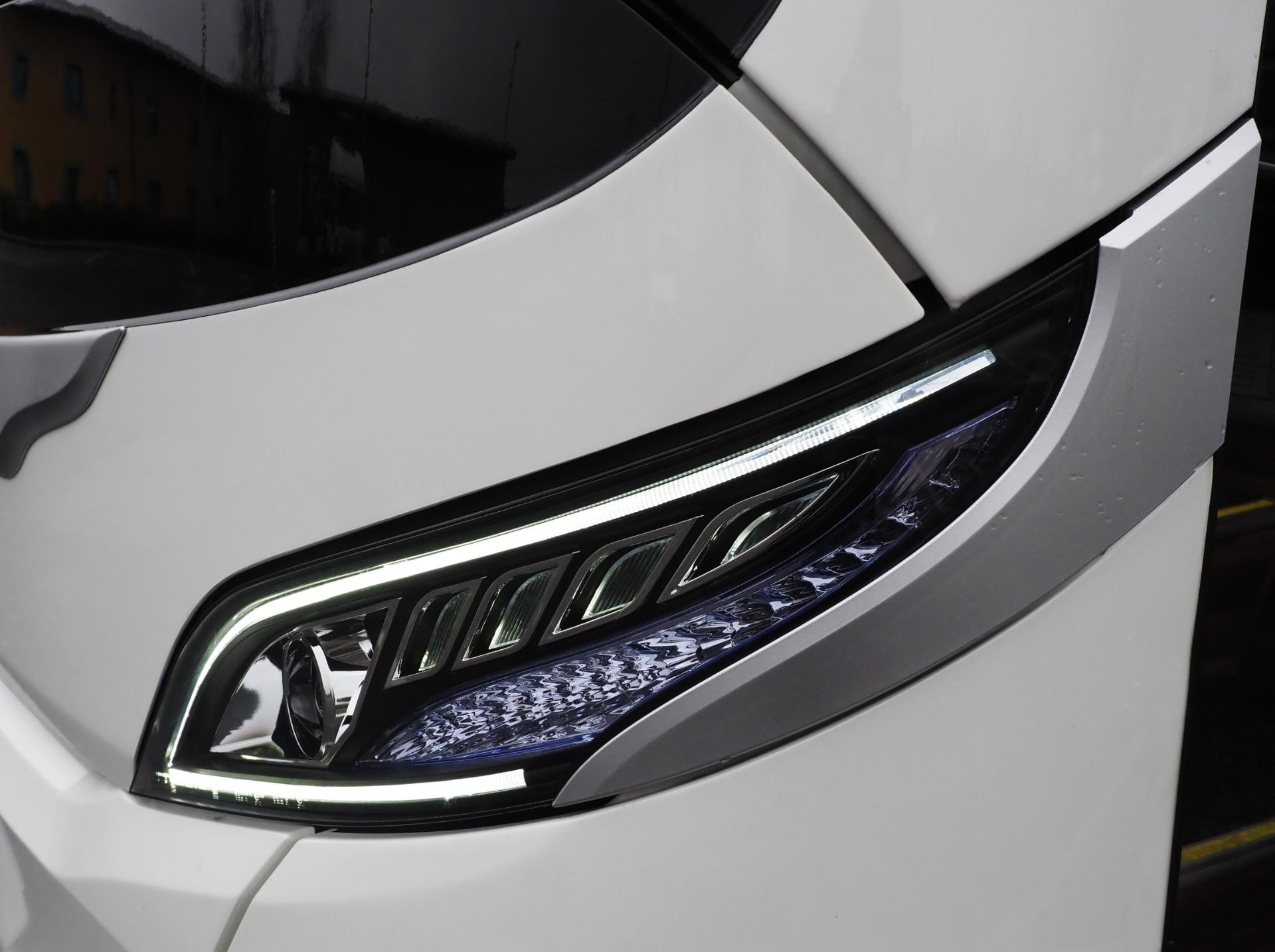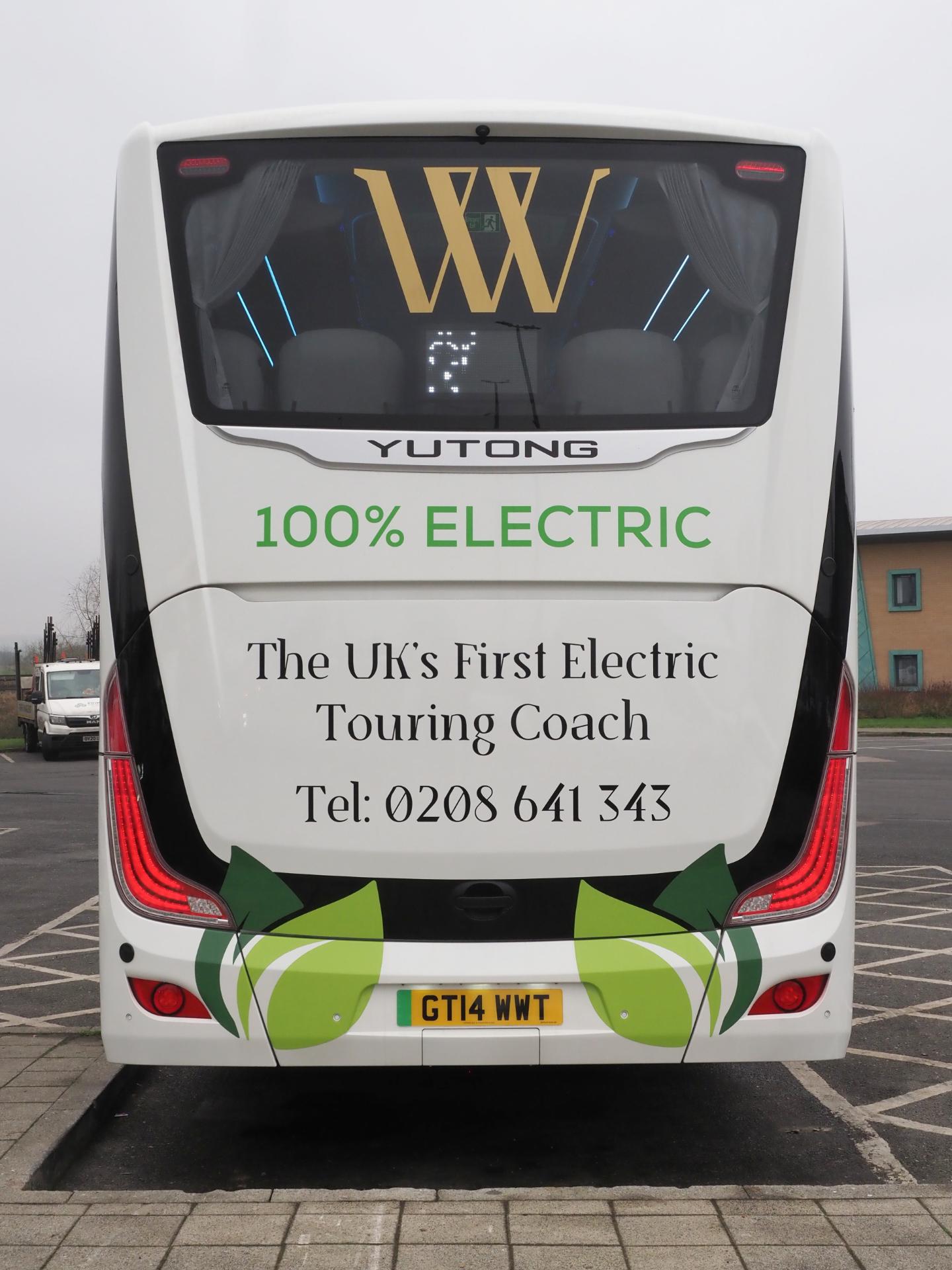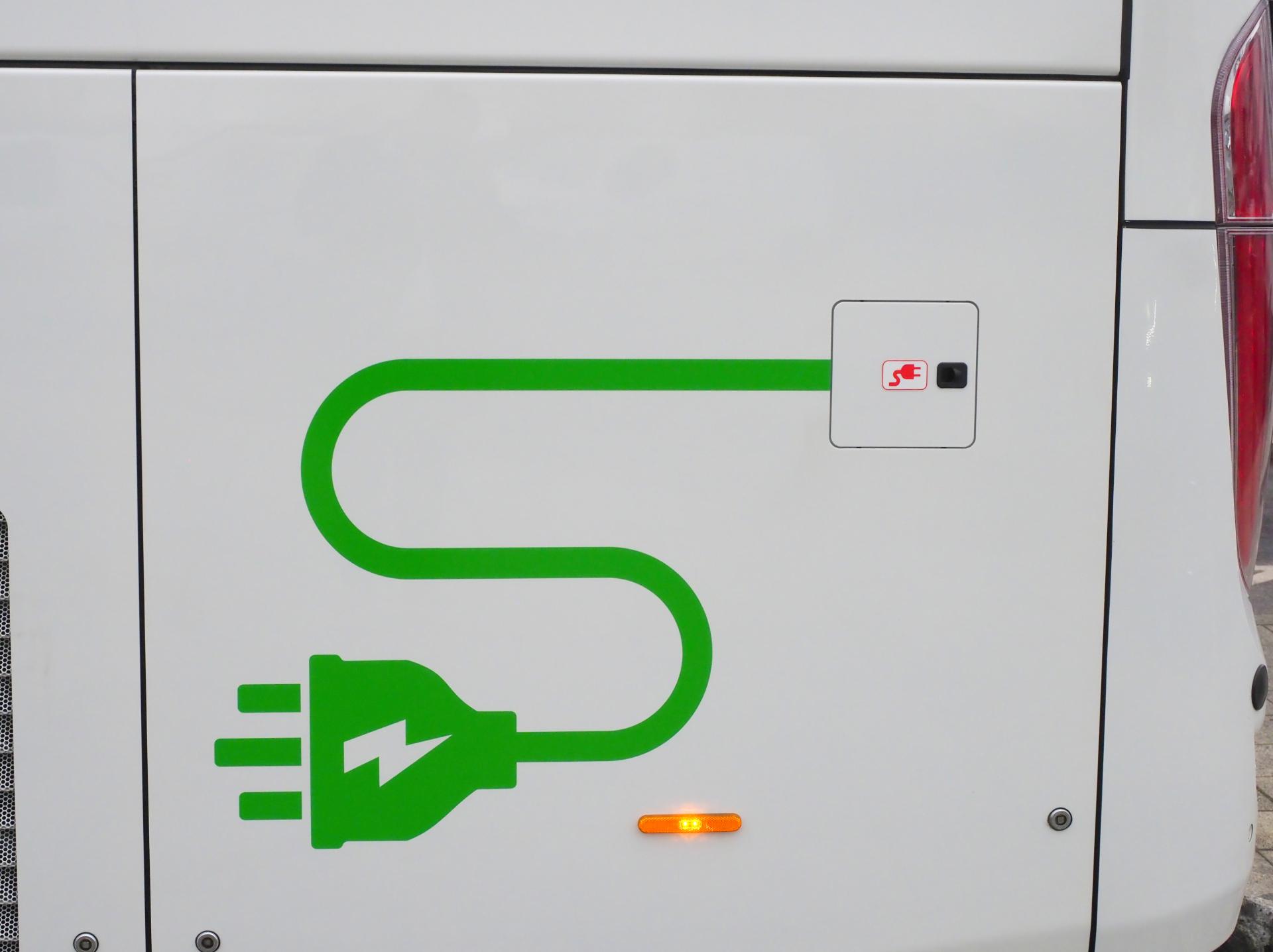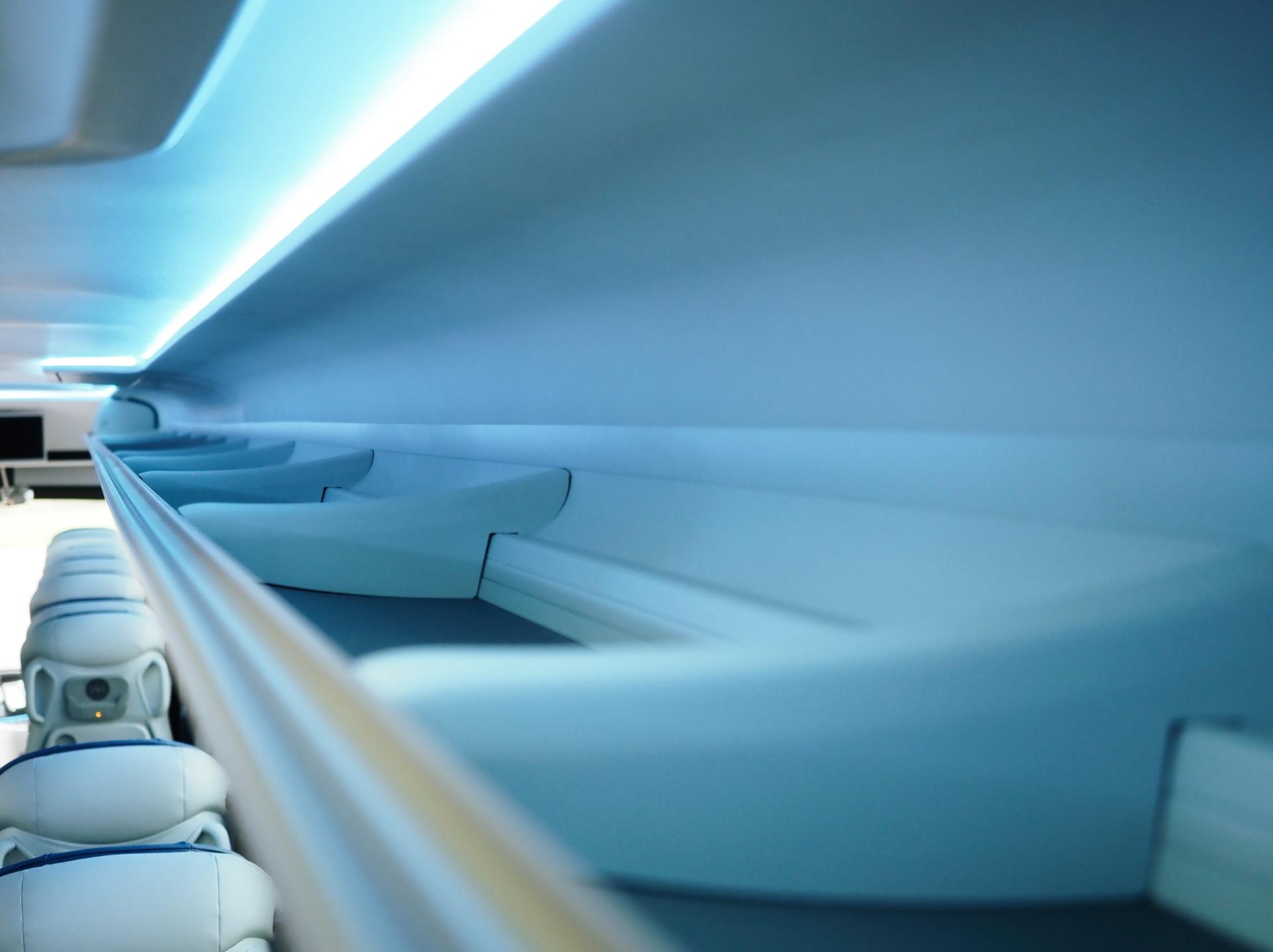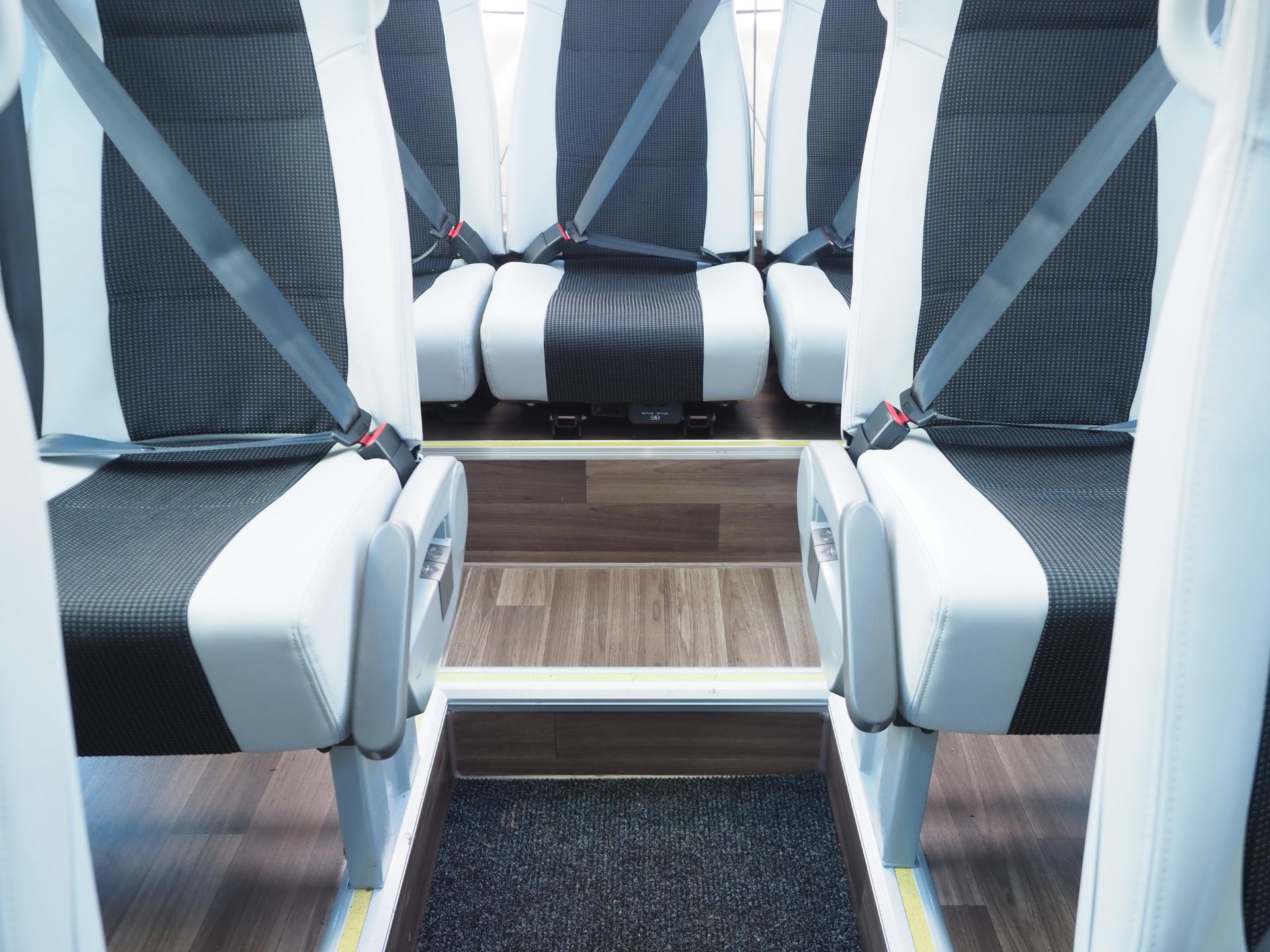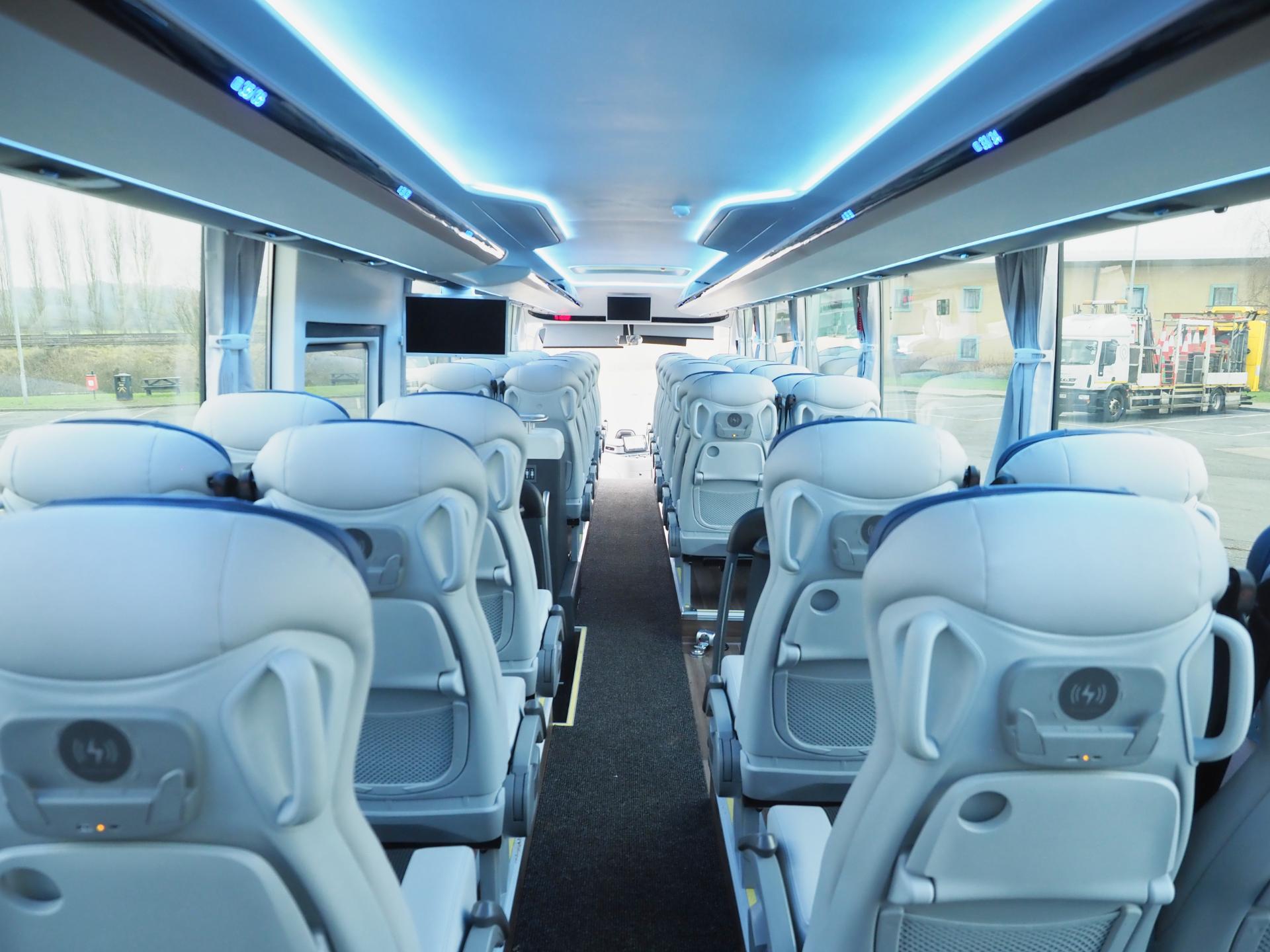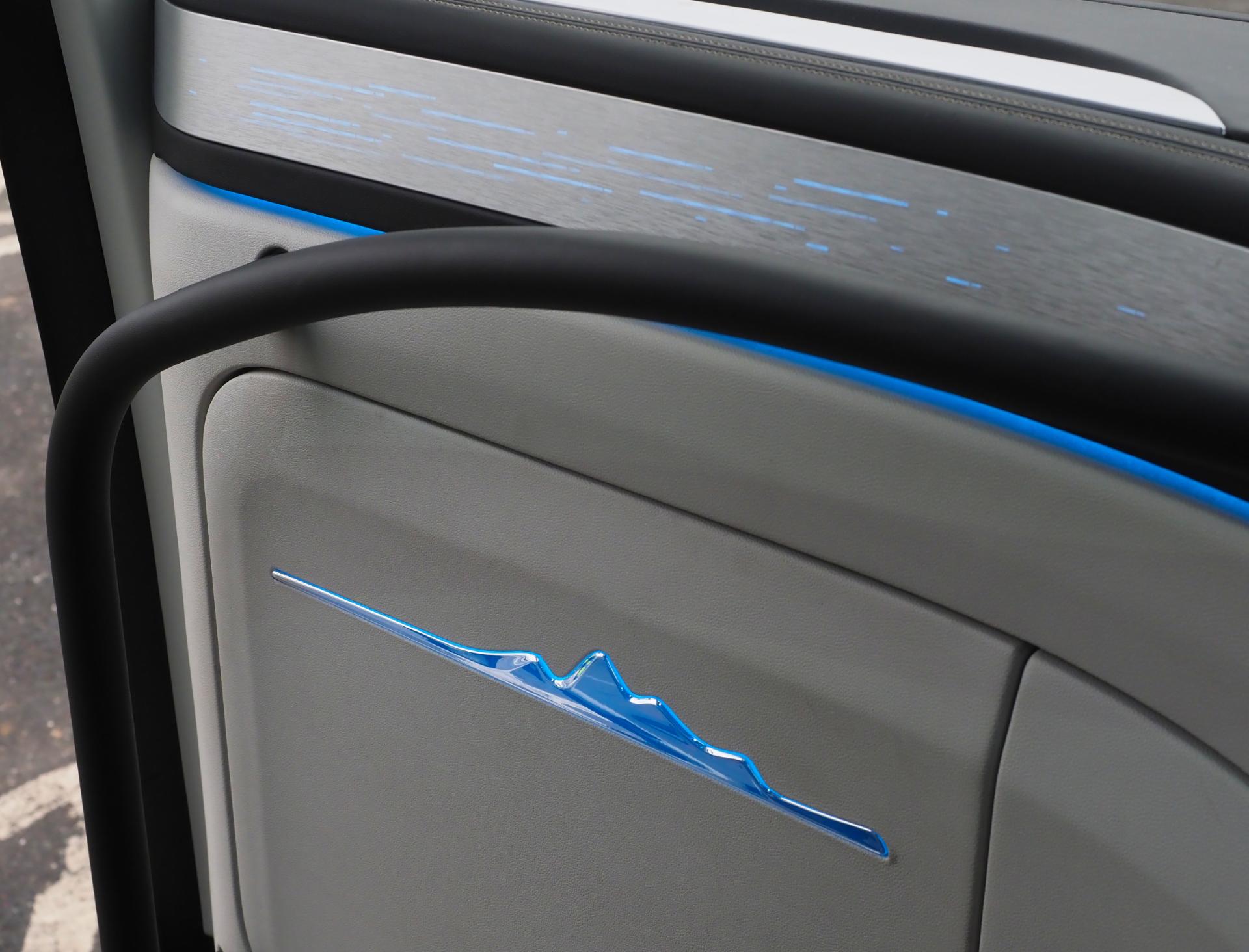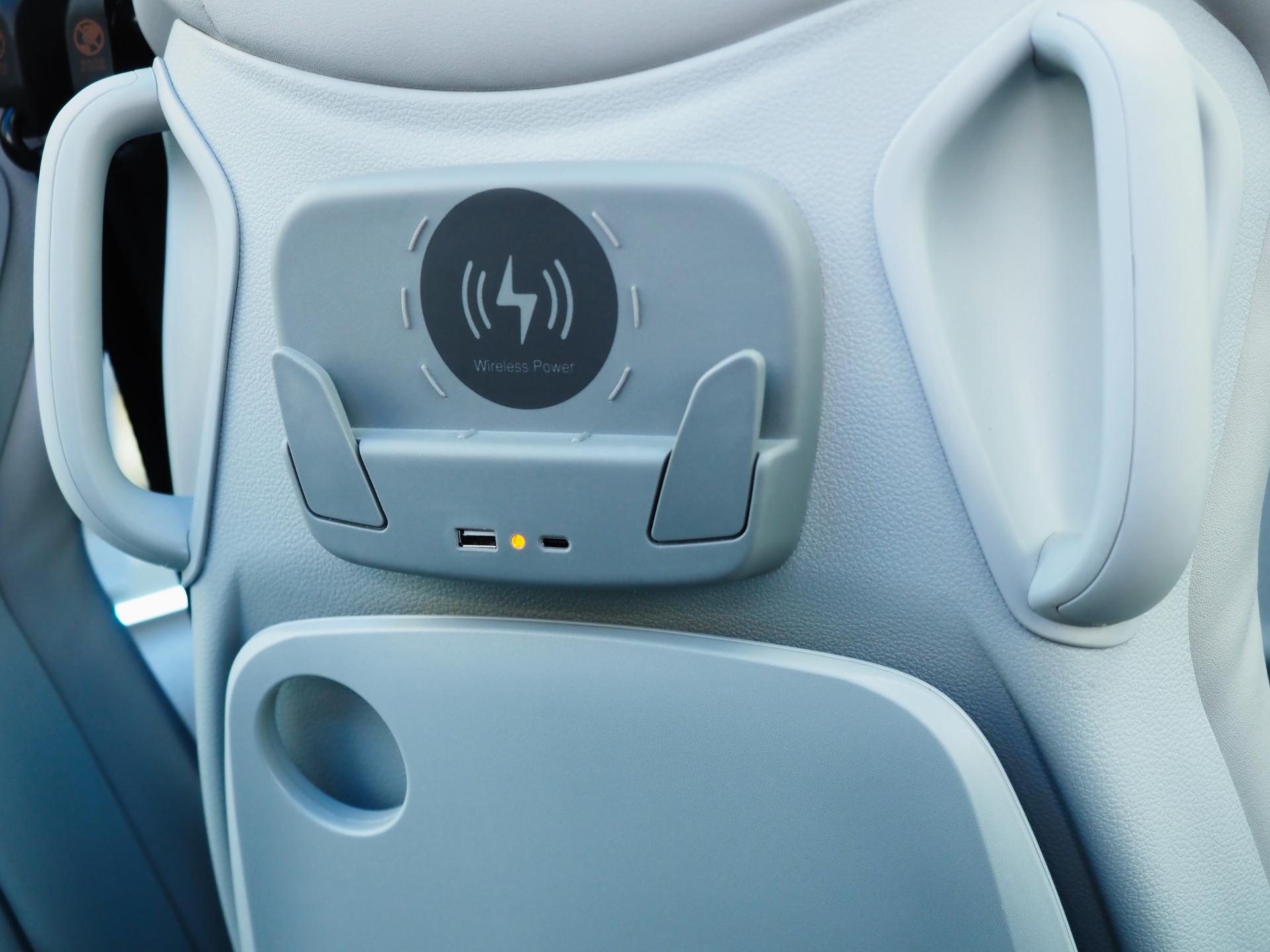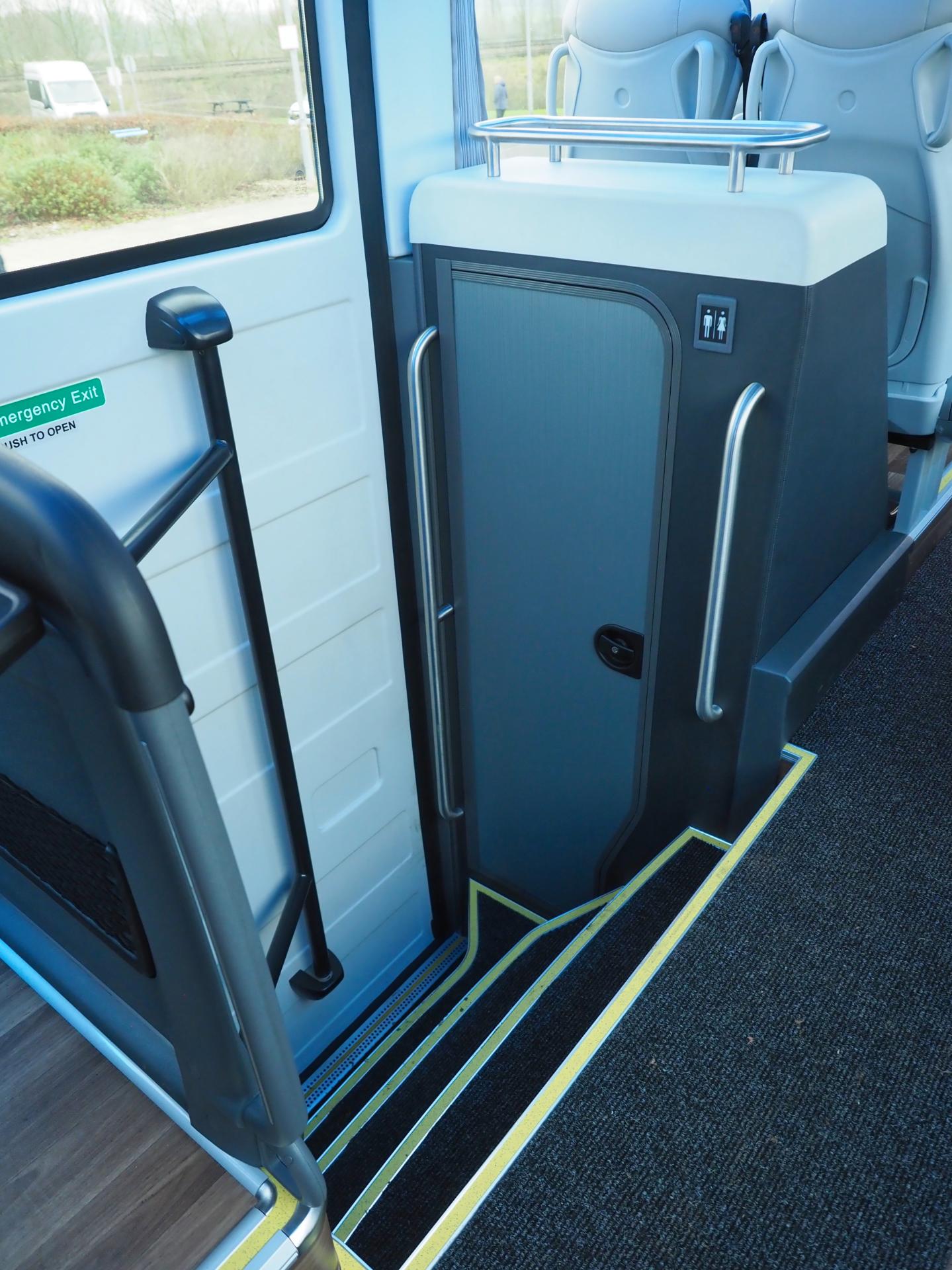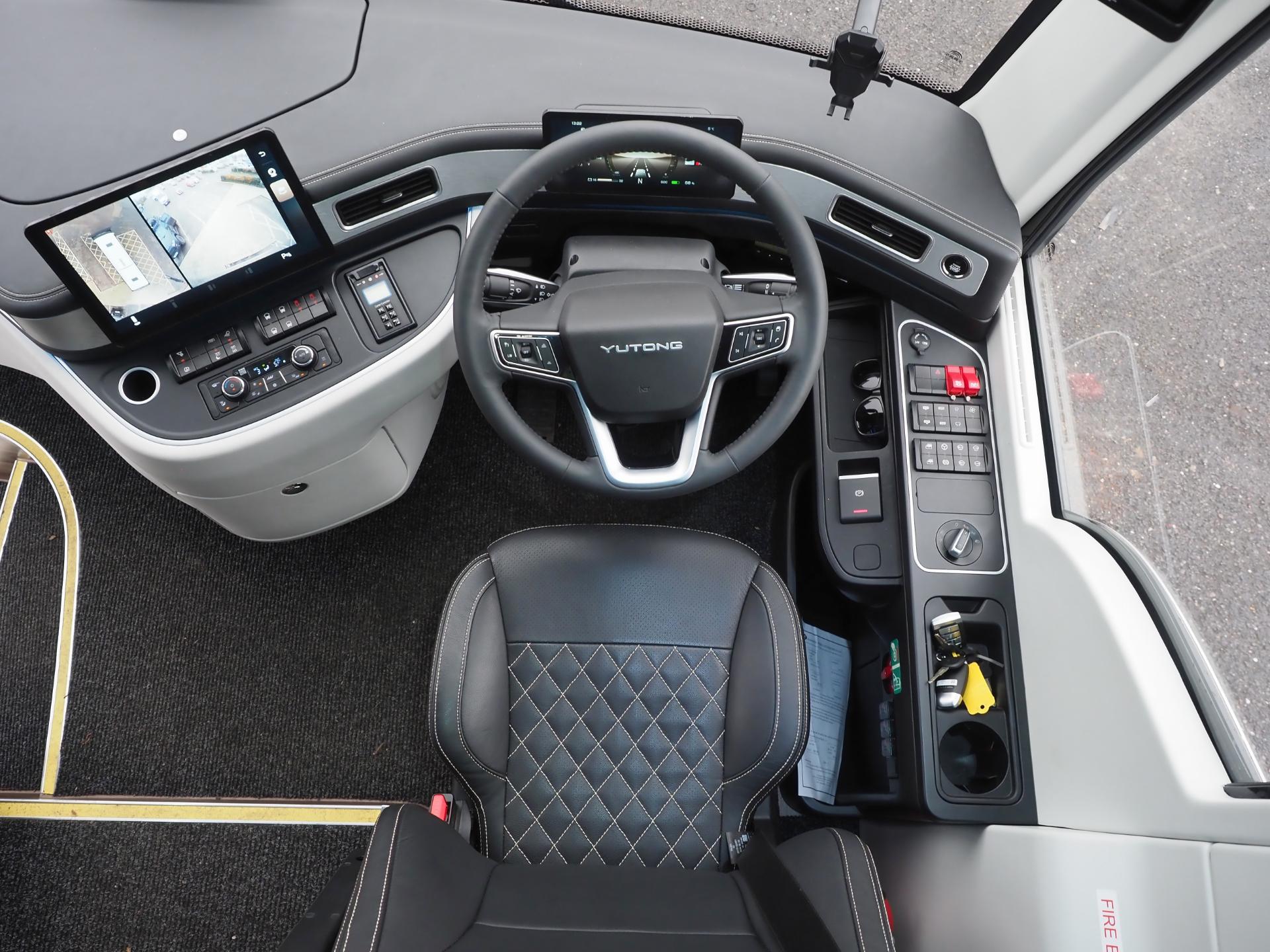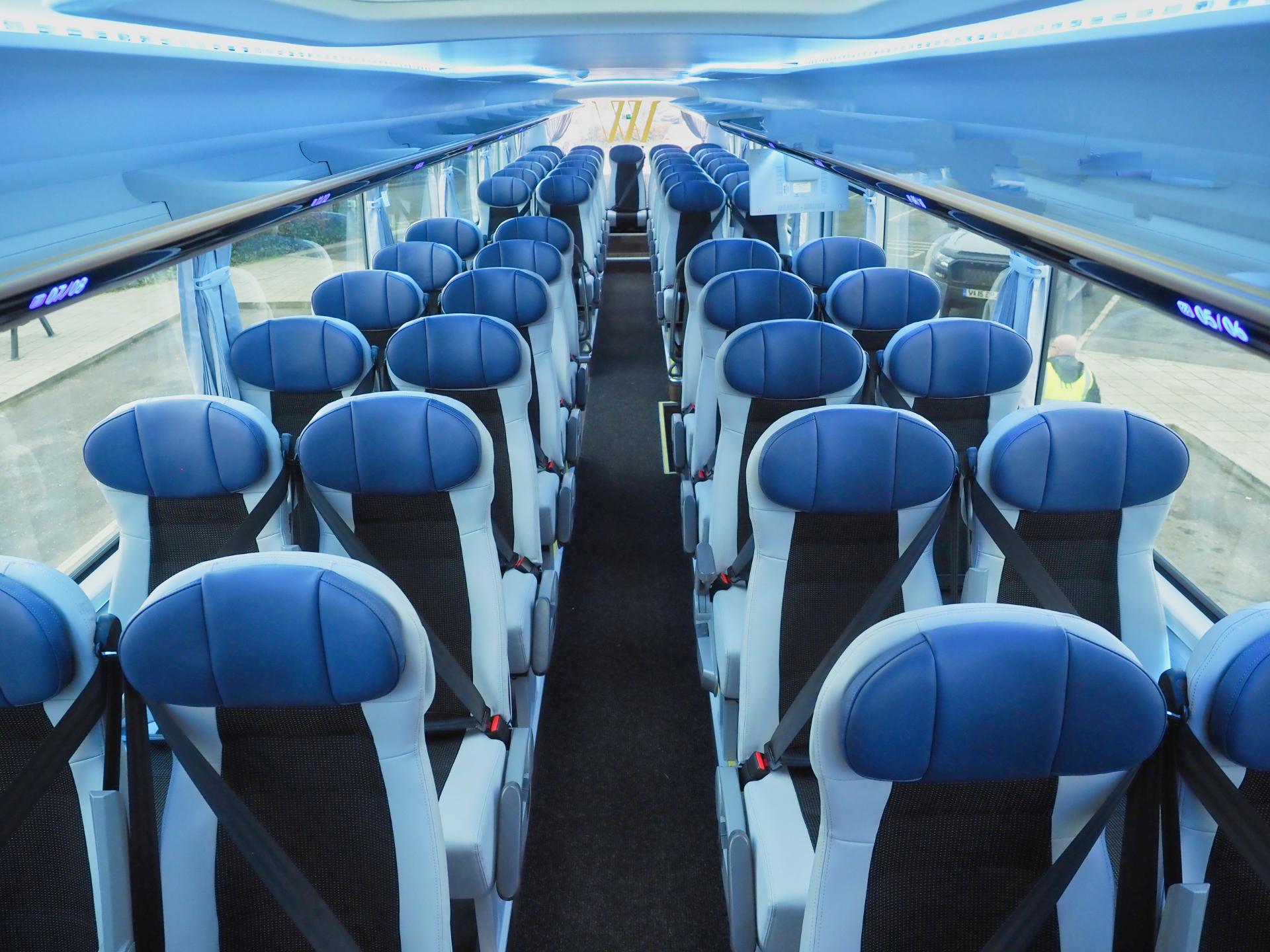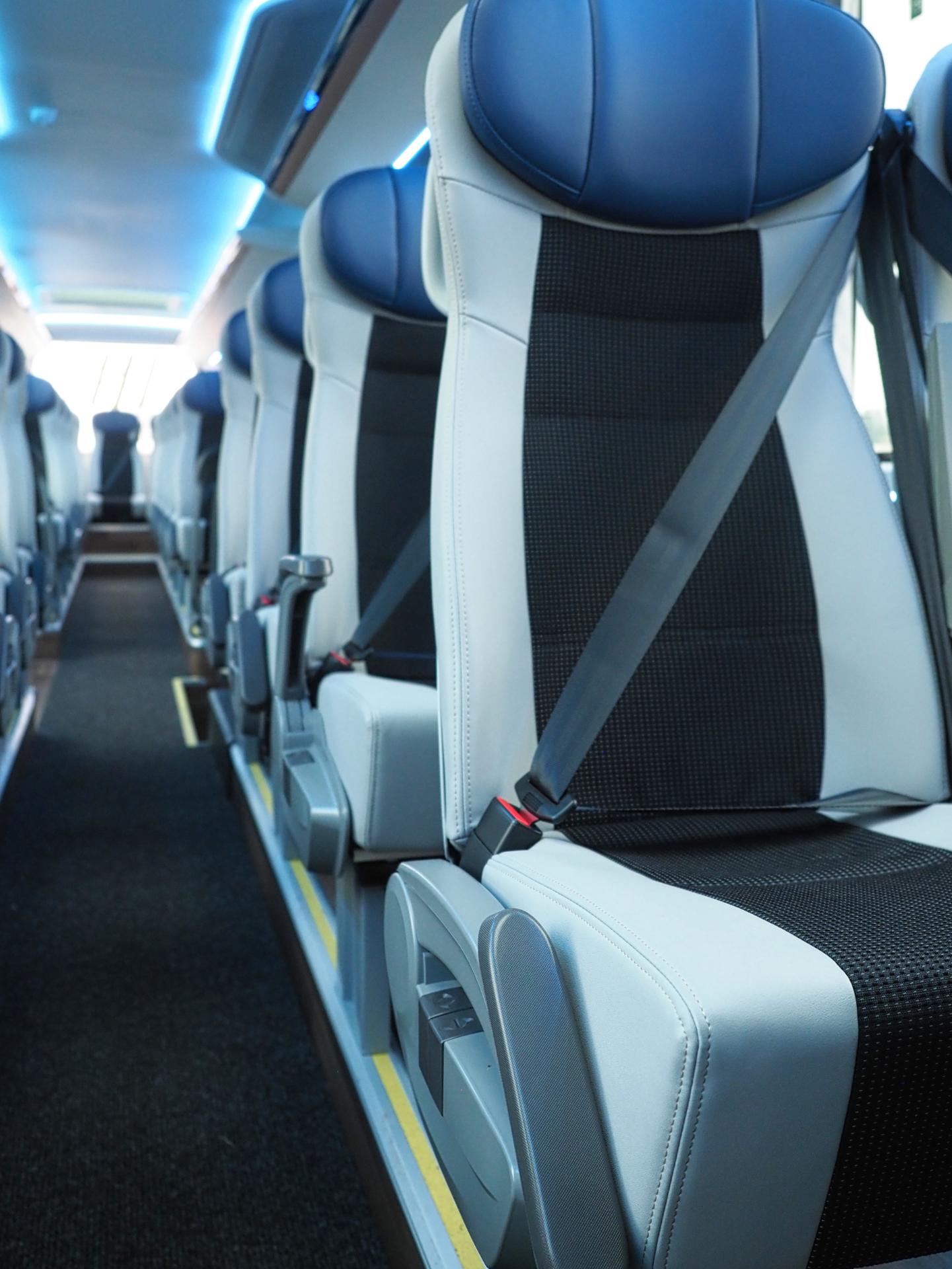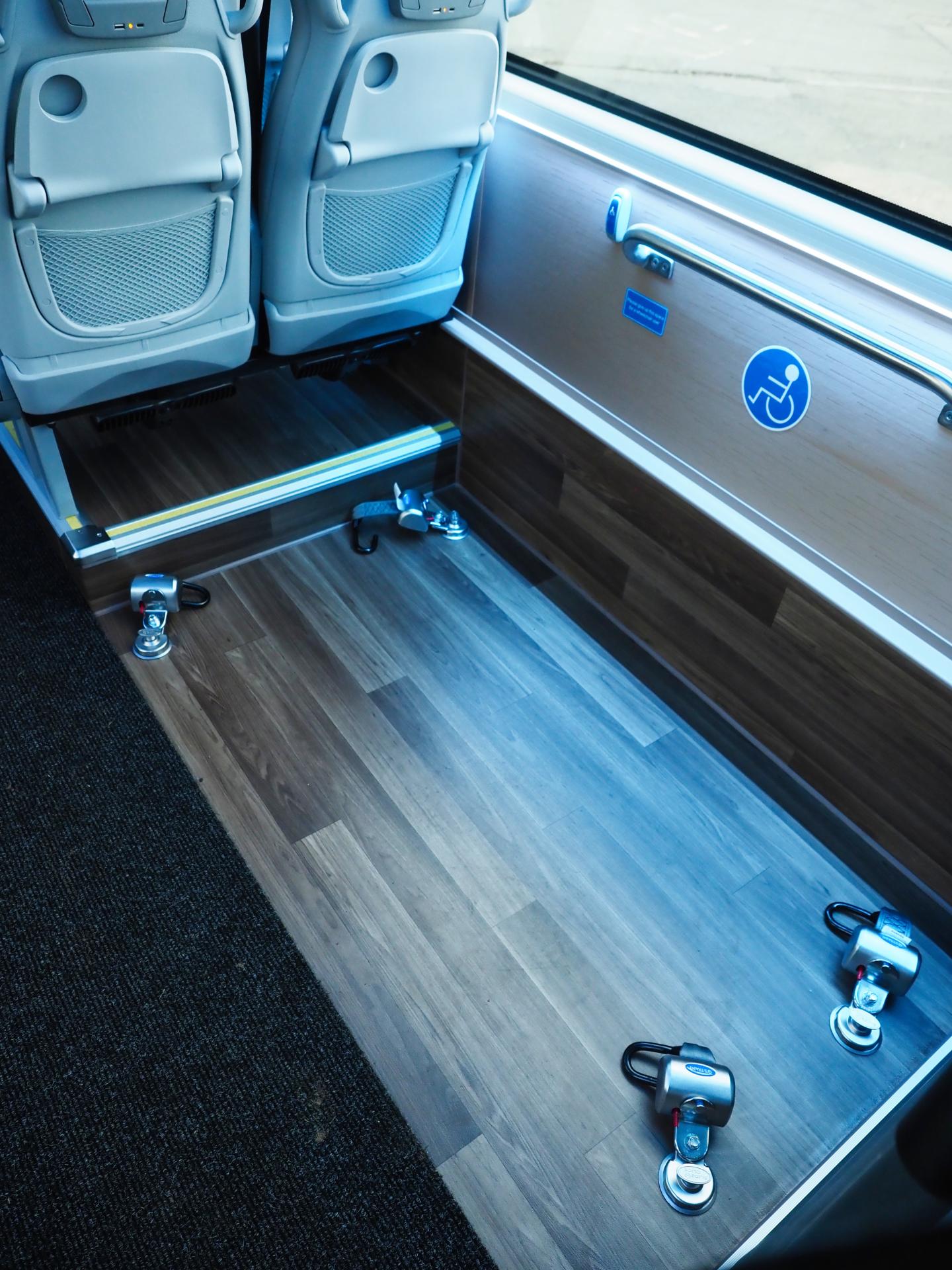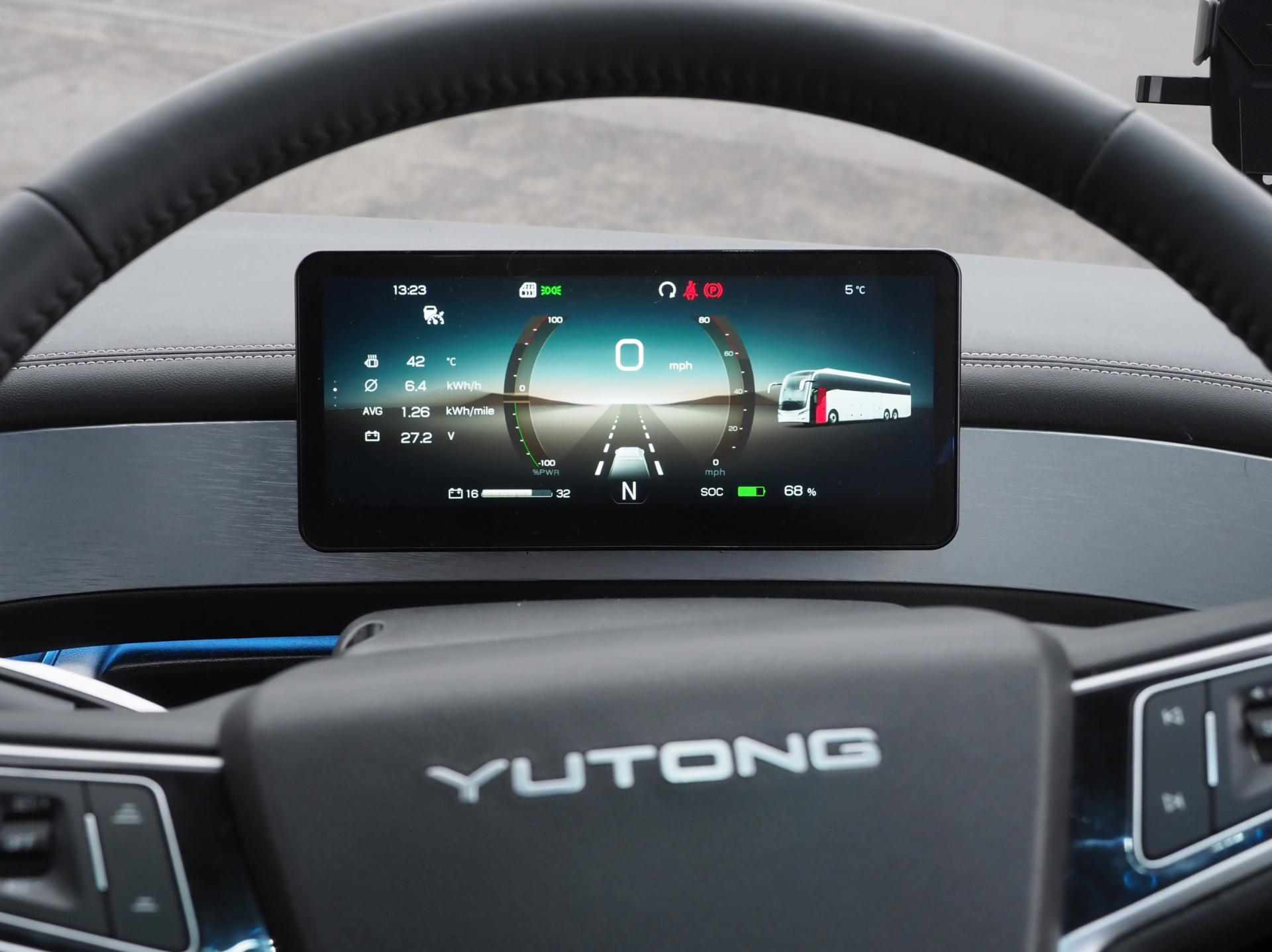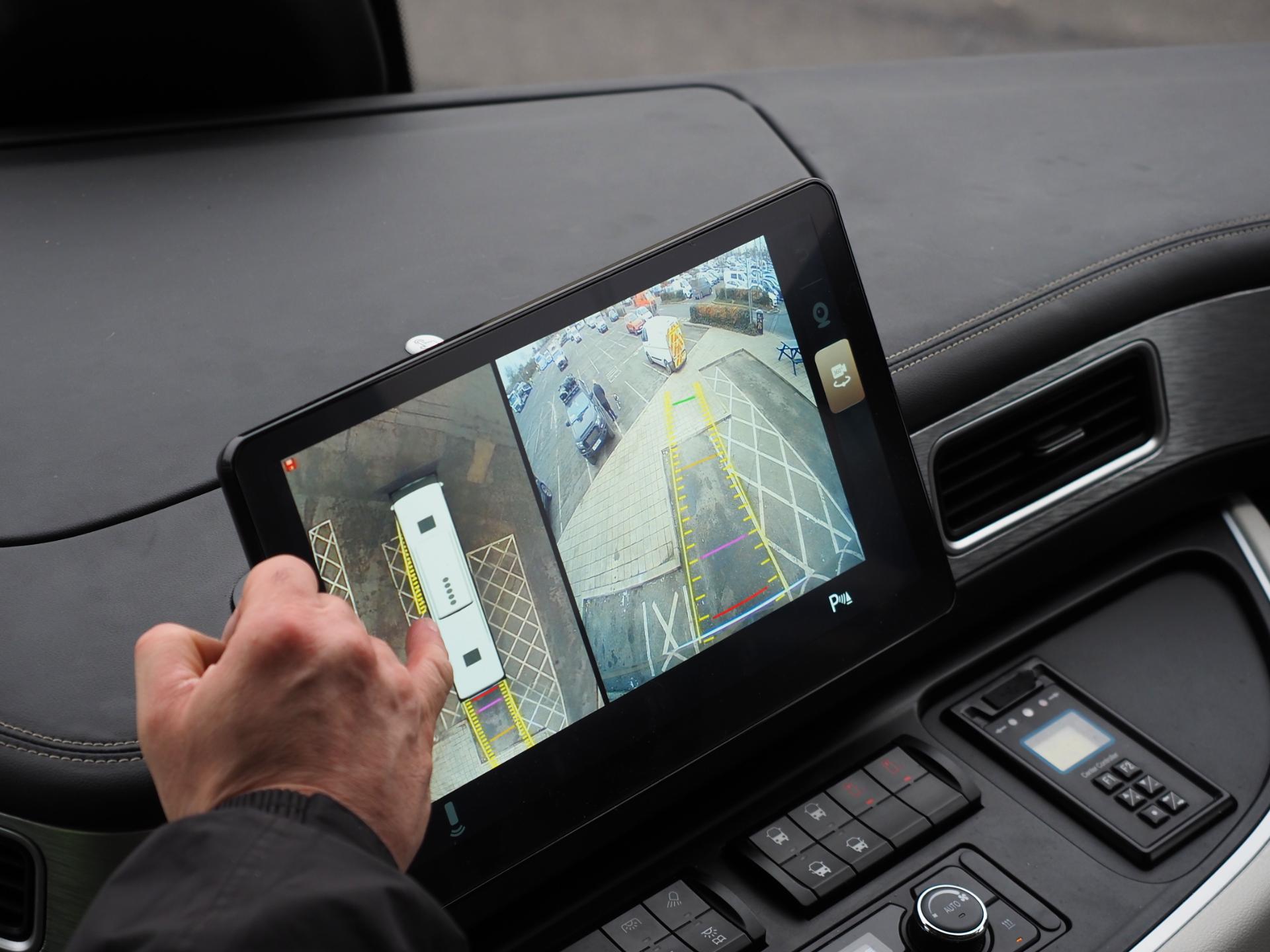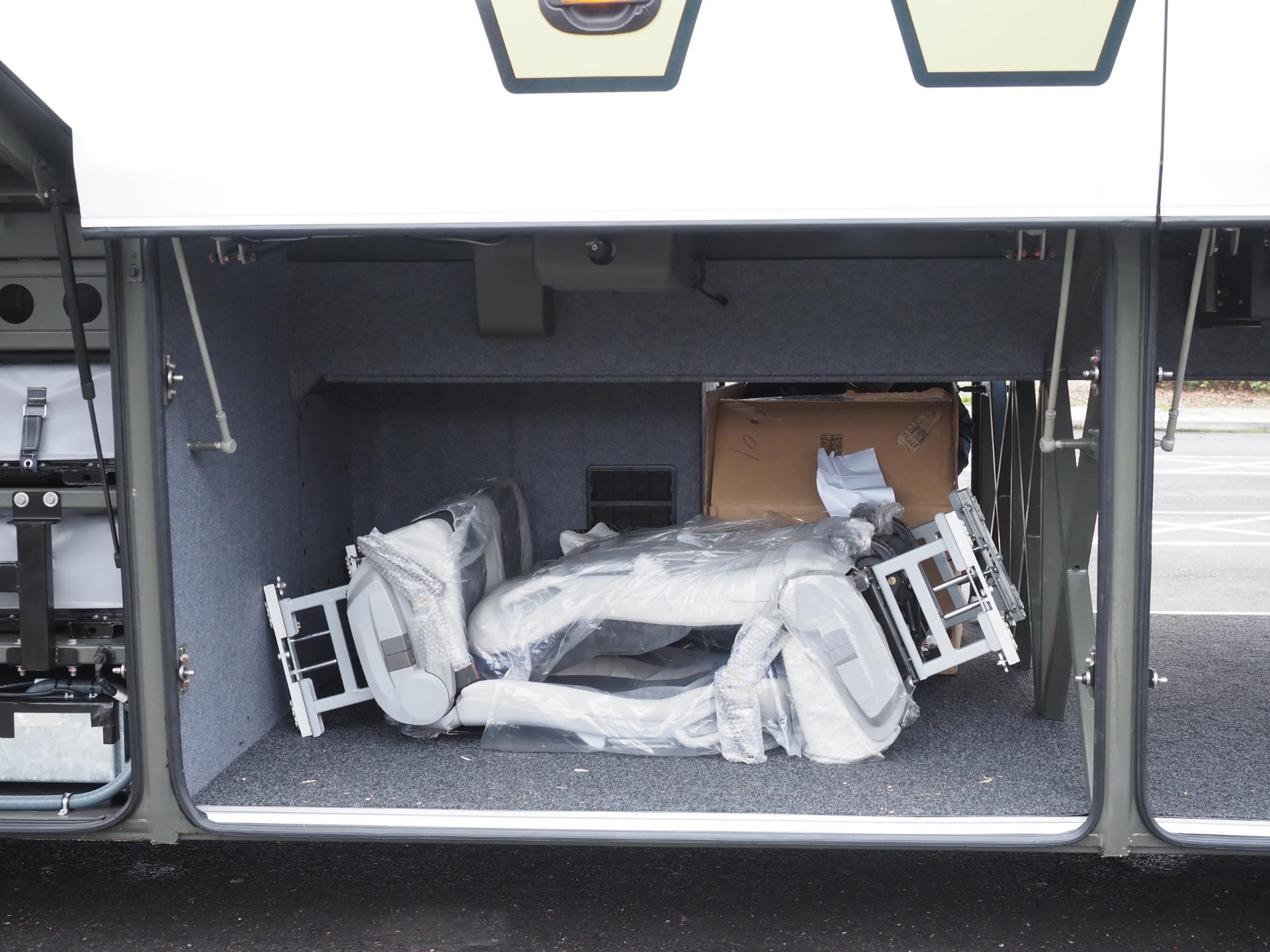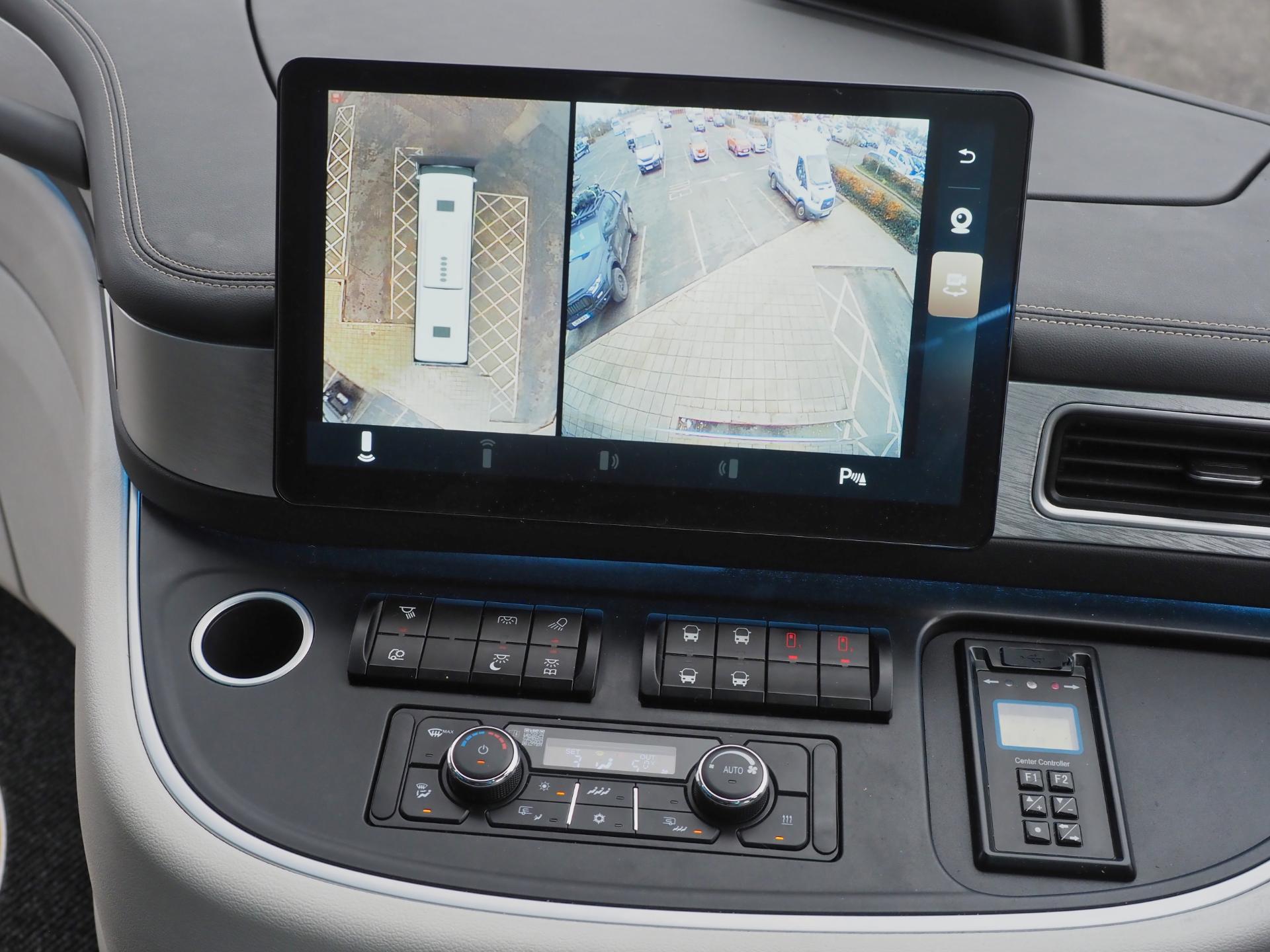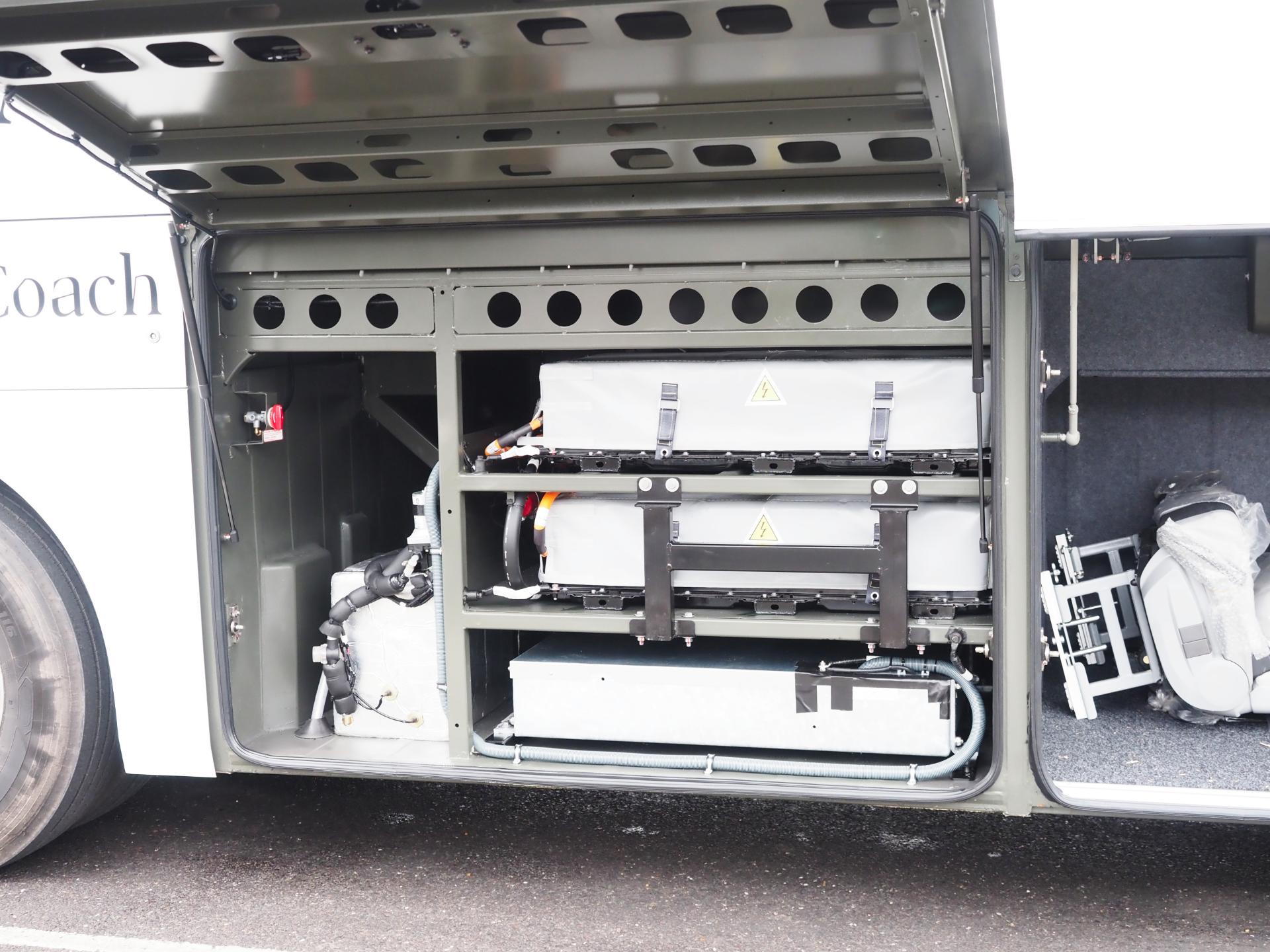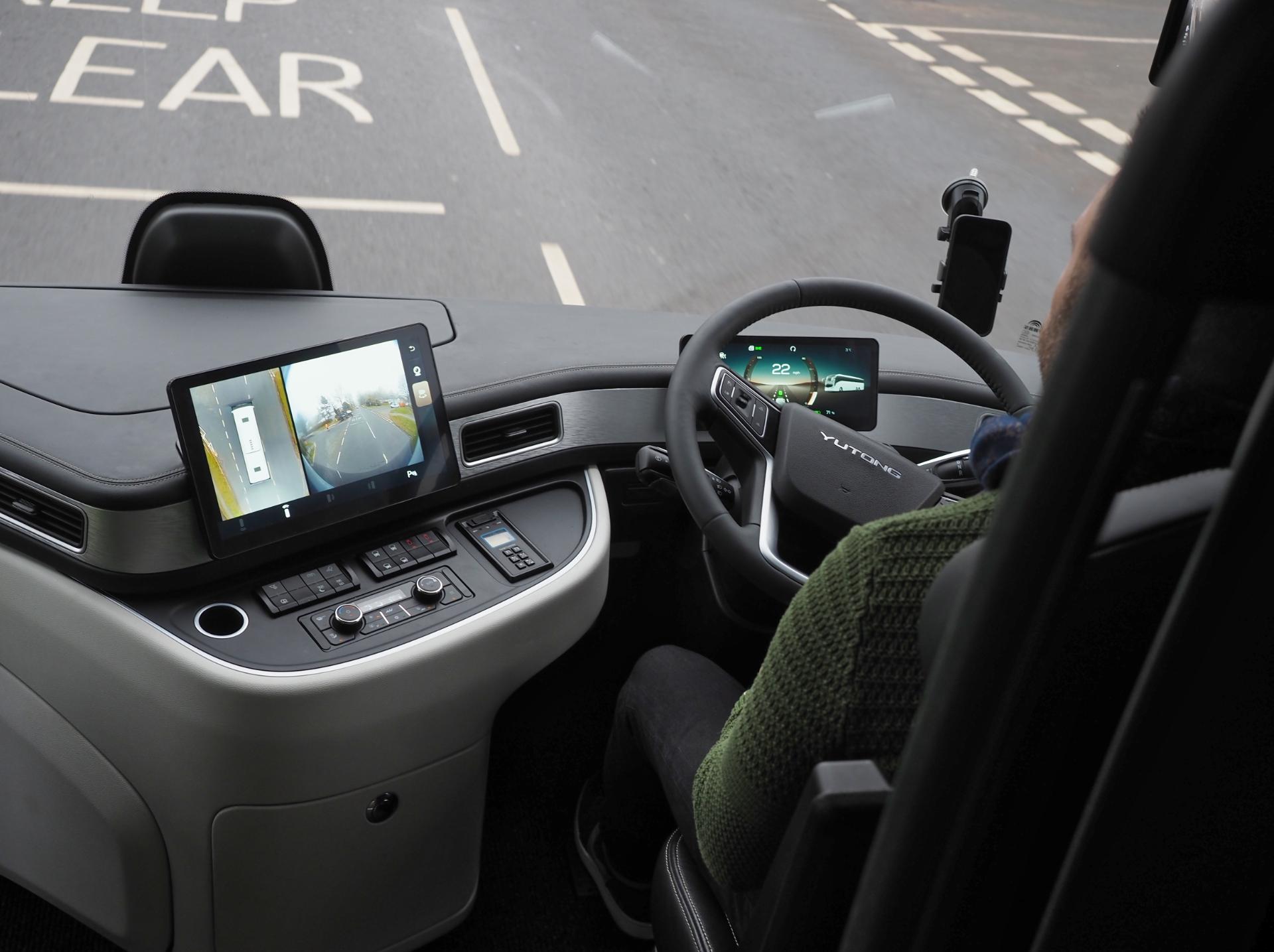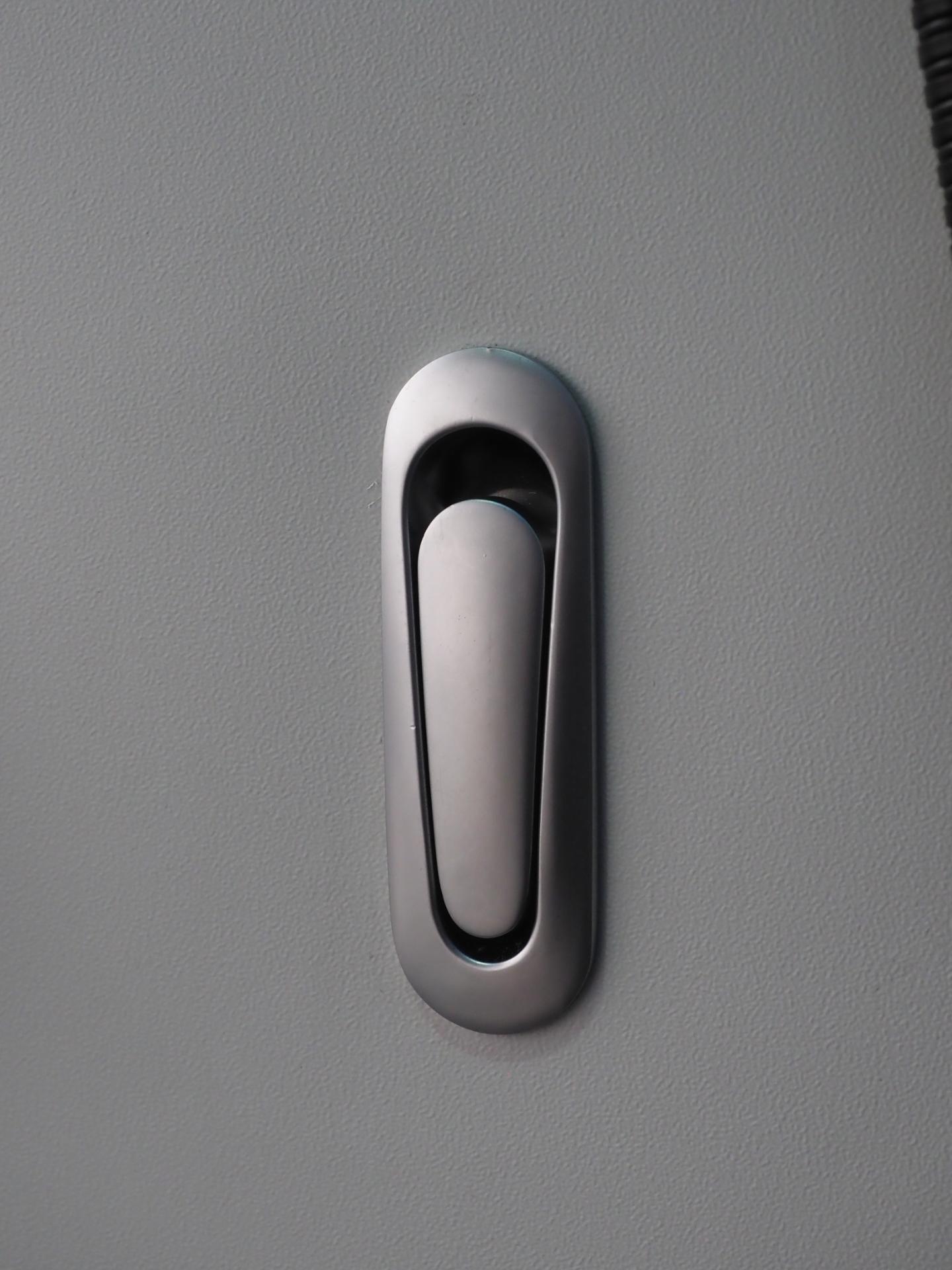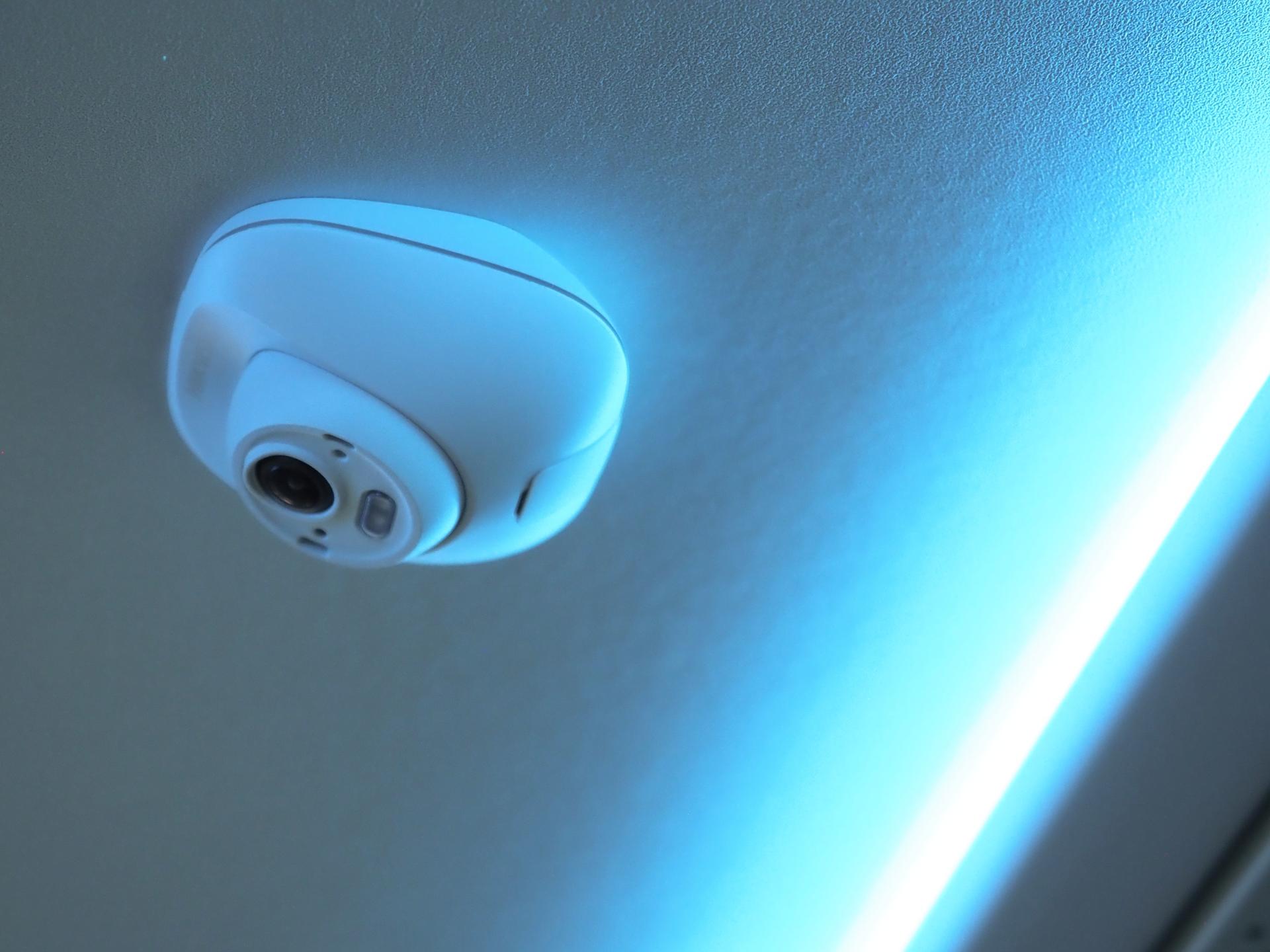ROAD TEST: Yutong GTe14
Wattsway Travel famously changed its buying plans and put its marker down on the Yutong GTe14 shown at Euro Bus Expo. What persuaded Mark Watts to do a bodyswerve? We take the UK’s first electric ‘touring’ coach out on the road, and discover a vehicle that draws a line in the sand for everyone else
CLICK ON THE TOP IMAGE TO SEE THE GALLERY
When we road tested Yutong’s TCe12 electric coach – the first battery coach in the UK – we were in praise of so much that it is, and critical of what it isn’t.
TCe12 is a competent inter-urban luxury people carrier – a coach, for sure, but in a very similar niche to Irizar’s i4, and with many similarities, such as use of a wide centre door to site the wheelchair lift. It is competent on the road, comfortable, quiet and a thoroughly useful vehicle, as is evidenced by uptake from Ember for its Scottish express services, to which it is well suited.
But it is a bit ‘bussy,’ with low luggage capacity and clearly aimed at shortish trips rather than airport transfers and premium roles. The GTe14 fills that gap, with a respectable (if not huge) luggage capacity, and the presence of a premium touring coach. But it really is so much more than just a step up in length and height, as we discovered.
We caught up with the coach and Mark Watts at the company’s ‘new’ depot in Wimbledon, where Mark was gleefully explaining that the new place has 400 Amps of power on tap, so will be able to charge his burgeoning fleet of electric coaches, which began with TCe12s.
It’s relevant to pause here and point out that Wattsway’s market includes a significant amount of work in London, which favours electric coaches in terms of their range. That said, GTe14 has a range of over 300 miles, so could probably service a majority of hires for many operators, with the advantage of lower running costs – read Mark’s comments in this feature below.
This is, though, an expensive coach in terms of CapEx. Can it justify that price tag? We set out with the Coach Stig to find out.
Exterior
The GTe14 is a fairly unremarkable tri-axle coach to look at; attractive, with its back-swept screen, brightwork and natty lighting clusters. Meeting the expectation of a high-end coach but not especially distinctive.
Built to PSVAR specification, the side destination displays are set into the the panel above the front wheel, rather than obstructing the view from the front windows. The front destination is nicely accomplished, too. You notice the full-height, wide nearside centre door immediately. It provides access to a centre stairwell and the wheelchair lift.
So there is no ‘continental’ door; an offside door would obviously not work for wheelchair access, and this coach is likely to stay in the UK. This also places the toilet on the nearside, of course. The knock-on of this is that some of the luggage bay on the nearside – accessed via power locker doors – is taken up with the toilet unit, and access to the corresponding luggage section is on the offside.
The GTe14 has eight cubic metres of luggage space – enough for most groups though perhaps a little light for a full load from an airport or a group on an extended tour. Batteries occupy much the the forward space below the floor. In luggage capacity, it is, of course, a huge step up from the TCe12.
Interior
The front passenger door and centre door have four good and even steps up to the driver’s level, and a further step on to the sunken aisle.
The courier seat is neatly stowed with no projections and there are good handrails on the left. But your attention is grabbed immediately by the dashboard area, which is stunning. It’s finished in stitched leather-effect at the top, with smart, cream-coloured mouldings below. Immediately inside the door is some lovely illuminated ‘mountain range’ trim which serves one purpose – to look nice. And it does.
The driver seat is a multi-adjustable marvel with everything including heating and a setting for heating and ventilation. In front of the driver is a dashboard which is as modern as you could imagine, and ergonomically first-rate. For a start, there don’t seem to be enough switches, and that’s a good thing. Dashboards which look like the flight deck of an airliner are just confusing, especially for drivers unfamiliar with the vehicle. The GTe14 dash is logical, with saloon controls to the left, driver-related switches to the right.
The drive selector is on a right-hand stalk, wipers and dips on the right. A second stalk on the right adjusts the amount of energy recovery on over-run and braking – essentially, the retarder. At it’s highest setting, it’s not only pruning off more speed (and it’s really noticeable) but recharging the battery. The multi-function steering wheel has cruise and audio controls.
There are two graphical displays – the centre binnacle which defaults to displaying speed, battery state, discharged/regeneration rate, power consumption, temperature inside and out, time and lane position. The left display is the camera display, which defaults to a front view plus the 360-degree ‘overhead view, more of which later.
To the right is the Camera Mirror System (CMS) with normal and wide-angle sections, the same to the left on the nearside A pillar. CMS is standard on this coach, with no mirror option.
The saloon is impressive, with excellent passenger seats which have a full suite of extras: adjustable headrests, footrests, magazine nets, seat-back tables, wireless and wired charging options. Great to see that USB and USB-C (the new industry standard) sockets are installed on the seatback, rather than tucked under the seat. The seats have side shift and recline functions, plus armrests.
The GTe14 can have as many as 59 seats, but this coach has 55 plus courier, plus a single wheelchair space. This gives ample legroom throughout the coach. The wheelchair space has an air of permanence but can be converted to seats, which are supplied.
The intrusion of the 1.1-metre-wide centre stairwell may be unusual in a coach of this type but the logic of having it on the nearside is clear; this coach is unlikely to leave the UK. The width, of course, is to accommodate the Hidral Gobel wheelchair lift but a by-product is that it makes the loo easy to get into; more to the point, this arrangement does away with the indignity of lifting wheelchair users two metres into the air in the rain through a special door. It seems to us to be far more inclusive.
On the road
There are few coaches which have such a number of views of the vehicle, including an overhead 360-degree view; drivers will have few excuses if they get back to the depot with corner damage.
Not only are there the CMS views but there are sensors on the sides and corners to alert drivers. The camera system itself has ‘intelligence,’ flashing amber and red boxes over obstacles the cameras have spotted.
On our way out of Wattsway’s depot, though, the Coach Stig did flag up something that niggled him. The rearview display has built into it distance markers for the rear axle turning point, the back of the coach and a line to mark 5m behind that. But they only show with the indicator on when you are travelling forward. The Stig would prefer them to show all of the time, or perhaps latched to low speed, as they are not a great distraction. The view from the side-mounted cameras does not, the Stig felt, show the rear corner of the coach particularly well, so the marker lines are really useful, as they are on other CMS systems. Manoeuvrability was excellent, typically for a tri-axle.
The overhead view is, though, really impressive. Not only does it show the coach as if from a drone, but shows the predicted track of the rear and front wheels, which can be useful; we tested the accuracy at a quiet Cobham Services coach park, and it was spot on.
Another function we never found, if indeed it exists, is the ability to make the main view of the centre screen a rear view rather than that from the forward-facing camera. Pelican Bus and Coach’s Area Sales Manager, Steve O’Neill, was with us and promised to feed back some of these minor points. The Stig did feel that a new driver to the vehicle has a lot of screens to take in, but within 30 minutes, he was used to them, and believes that they all had a useful function.
The coach accelerates as only electrics can; smoothly, seamlessly, powerfully and silently. At all times, the Stig said, the throttle response is predictable. Likewise the steering: “It’s light but positive, not heavy or woolly, and sends the coach where you want to put it. It;s unaffected by the road surface.”
The view from the driver’s seat is nothing short of exceptional; the best we have tested in any coach. The dashboard is low, the A pillar and B pillars never intrusive: “The view of the main binnacle is superb and the numbers clear,” he said. “And you have to praise the finish of this driver cabin; it’s a quality finish.”
The windscreen heating system, Mark Watts told us, is incredibly quick; the glass is wired but on top of this, it has a heated demister which he claims clears the screen comfortably within 30 seconds. The driver’s window is also heated.
The tachograph, often placed in susceptible positions, is tucked down to the right out of reach while driving. The Stig felt that ideal, but he did feel that the remaining driving hours display could usefully be incorporated in the main binnacle, if that were possible.
The coach has some automated systems. For example, if the vehicle is held on the service brake for a few seconds, the parking brake is automatically applied. However, in common with modern cars, once acceleration begins, it is automatically released. The test driver loved the cruise control. It operates as they all do, with Set and Resume buttons but in a different way: “If I hit the Resume in most coaches at a speed well below the set speed, they downshift and set off like a scalded cat.
“The Resume button on this coach just resumes acceleration at a sensible pace. Speed just creeps up sensibly.”
This is, of course, a very heavy coach; 500+kilowatt hours of batteries see to that. And it feels like a heavy coach; the heft of the vehicle is somehow apparent, and this somehow improves the ride. Our only criticism of the ride is that it can feel a little shaky over potholes and corrugations, but it’s more than likely that this impression is given by the overall silence of the interior; this is a coach where the rear seats will prove as popular as the rest.
The GTe14 comes with all the passive safety systems of any coach but on our two-hour test ride, the worth of the camera systems was one of reassurance; just a lot more information which wasn’t a distraction but could be gleaned with one glance to the left. Pedestrians, cyclists and motorcycles creeping up the inside are clearly shown, and highlighted. That car about to pull into the fast lane is picked out. And all of this presented on crystal clear screens.
Verdict
The Yutong GTe14 tri-axle is a superb coach, with an interior of the highest, premium quality and enough luggage capacity to manage most hires.
There is nothing about the way it drives and performs that our test driver did not like; in fact, in some areas, it outperformed the best of diesel coaches. It accelerates smoothly but briskly, has pin-sharp handling and is a quieter travelling environment than is possible with a diesel coach.
It’s also a driver’s vehicle. The dashboard and driver ergonomics are possibly the best we have ever tested, offering a class-leading view of the road and a camera mirror system (CMS) which inspires confidence in tight manoeuvres. And as a tri-axle, it’s very capable in a tight corner.
Whether you like the seating and stairwell configuration depends very much on your viewpoint. For speedy entry and exit on UK roads (and this coach is unlikely to go abroad), it’s excellent, especially if you are a wheelchair user. The GTe14 is ‘PSAR native’ in that wheelchair access is designed into it from the start. In our view, loading hweelchairs over the centre stairwell is superior to the current hole-in-the-side wheelchair lift, getting passengers aboard in greater comfort. Access to the loo is better, too.
The large stairs do, of course, require the loss of a seat pair on the nearside, and the wheelchair space another four seats. That’s why you get only 55 seats (59 if you fill the wheelchair space) in a 14-metre coach. The seats themselves are excellent, with adjustable headrests and phone charging three ways.
Whether you have enough electricity capacity to electrify part of your coach fleet and whether you can afford the CapEx for the coach and infrastructure are questions only each individual business can answer, with so many variables at work. What we can say with confidence is that the GTe14 is not just the most practical electric coach available, it may well be one of the best coaches we have ever road tested. It is, for reasons beyond being an electric, a glimpse of the future of premium coaches.
About the technology
Yutong’s huge experience of electric vehicles was bound to shine through in the GTe14. It’s a coach without foibles. It is, in fact, an important vehicle.
The reluctance of the coach industry to ‘go electric’ is understandable and logical, not least because there’s a fair bit of time on the clock before this becomes strictly necessary. Electrification is expensive, not least for the infrastructure for fast charging, and in terms of capital outlay, so are the coaches.
The upside of electric vehicle ownership is reduced fuel and maintenance costs, and Yutong has a great reputation among bus operators for achieving these aims. This is, of course, built on the manufacture of 190,000 electric buses and coaches, sold worldwide and 44 billion kilometres on the road.
At the core of the technology is the battery. It’s a cobalt-free (and less combustible) CATL Lithium Ferrous Phosphate chemistry, now in its second generation, and has YESS – the battery safety system which Yutong says make it all but impossible for a battery fire to occur. The battery system is in a strong case which its own cooling system and offers several layers of protection against fire. We know of no instances of Yutong battery fires. Indeed, statistically, EVs are at least ten times less likely to catch fire than diesels. Find out more at https://pelicanyutong.co.uk/technology/battery-chemistry/
The onboard, solid-state computer controls a permanent magnet drive system to make the most of the available power, the drive becoming a generator on over-run and braking to recharge the traction battery. The system in its U11DD achieves an independently-verified 0.69kWh per kilometre. The range of a full charge in the GTe14 is more than 300 miles.
A Yutong battery has an eight-year, or 400,000km, warranty, with a nominal end point of 80% capacity, though in service the batteries are out-performing this by a margin.
Charging can be at 150kW using one charge gun, or 300kW using two. That makes useful top-up charges during the day practical as well as the usual overnight charging.
Why buy electric?
Each day, operators are faced with the task of allocating the most appropriate and cost-effective vehicle to each hire, whether on grounds of capacity or client expectation.
There is no ‘does everything’ coach, though the closest specification is probably the high-floor, 57-seat PSVAR coach with a toilet. It is the bedrock of most coach fleets. Pupils off to swimming might get one of the older coaches for such a short trip. A tour group away for four days will need a front-line coach. But importantly, a group of 16 people on a day out are likely to get a minicoach, because it’s cheaper on fuel and maintenance.
The Yutong GTe14 is a 53-seat PSVAR coach which is cheaper on fuel and maintenance; a lot cheaper, as you’ll read below, where Mark Watts lets us into his costs, and the reason – despite the high price – he is investing in electric coaches. Not so far away, Westway is doing the same, and Dave West has reported that his original TCe12 coaches, bought in 2019, have never suffered a mechanical failure.
Both would argue that their electrics are the workhorses of the fleet, allocated to any suitable job because the more mileage they do, the more money they save. The argument that these coaches can’t match the range of a diesel, they say, is an irrelevance; how often is a hire more than 200 miles? And if it is, just use a diesel coach.
At the coalface
Wattsway is definitely the most appropriately-named early adopter of electric coaches we could imagine, and a young company with an eye fixed on the future.

Mark Watts, Wattsway Travel
Mark Watts, its founder and owner of Wattsway, has absolutely no doubt of the direction of travel for his fleet; it’s electric: “For me, electric is a no-brainer. This coach is a step up from the TCe12 because of the luggage space, and a very different beast, too. The technology has already moved on. The regen is more effective. I drove it back from Pelican [in Castleford, West Yorkshire] and I had great fun. I think it’s the best coach I have ever driven.”
The reason Mark is so committed to the electric project is, though, purely practical; within a few years, the additional cost of the vehicle will be overtaken by the savings: “When we got the TCe12, I worked out that the combination of cheaper fuel and lower maintenance cost was saving me £30,000 a year. Electricity has gone up, so that’s now a saving of £25,000 a year. If I could afford it, the whole fleet would be electric.”
In considering the savings, Mark says, you also have to consider the downtime caused by a mechanical failure, which might include sub-hire and certainly includes reputational damage. Wattsway subs out its maintenance, so keeping that bill down is vital. MoT, he says, takes less time because there is less for VOSA to check.
The new depot for Wattsway in Wimbledon has capacity to run as many as eight high-speed chargers, so Mark has some spare capacity to add further electric coaches to the fleet.
Wattsway has a core of four drivers for the electrics and says there’s a definite learning curve for them: “But now they are in a competition to see who can get the best range. We generally aim to keep work to within 500km but if it’s close to the range limit, I have a chat with the driver beforehand.
“They are always well received by drivers. My mechanic would drink diesel if he could, but but when he first took an electric out, he remarked how good it was to drive and to be aboard. One of our older drivers fought shy of driving them for ages, until one day he was the only guy available for a job; now he says he’d drive one at any opportunity.”
| Yutong GTe14 | |
| 57+2 seats ( 53+2 seats with wheelchair) | |
| 535kWh, £495,000. 621kWh, £515,000 retail | |
| Dimensions | |
| Length (m) | 13.97 |
| Width (m) | 2.55 |
| Height (m) | 3.9 |
| Body structure | Integral steel monocoque |
| Luggage Capacity | 8m3 |
| GVW | 24,000kg |
| Driveline/axles | |
| Motor | Single rear-mounted electric |
| Front axle | ZF independent air suspension steering |
| Rear axles | ZF air suspension drive + ZF third axle with Bosch steering |
| Suspension | Full ECAS air suspension with twin front air bags and six rear air bags, SACHS shock absorbers and kneeling function |
| Tyres/Rims | Michelin 295/80 R22.5 |
| Braking | Front and rear disc brakes, WABCO AEBS\ASR+ESC, WABCO air dryer |
| Electrical system | |
| Charging | Single CCS2 DC charge plug at n/s and o/s rear of coach suitable for 300kW charging |
| Battery | LFP (Lithium Iron Phosphate) water-cooled 563kWh |
| Range | 563kWh Battery – Approx. 300 miles. 623kWh option, approx. 340 miles |
| Other specification | |
| Wheelchair lift | Hidral Gobel electrically operated |
| Luggage lockers | Powered doors, two nearside and one offside |
| A/C | Yutong roof-mounted (cooling 38,000Kcal/h, heating 36,000) |
| Heating | Electric heaters in passenger cabin, separate heater for driver. Step heaters for front and side doors. Heating and cooling defroster |
| Mirrors | Camera Mirror System (CMS) |
| Sun visor | Electrically-operated double front, manual driver side |
| Warranty | (563kWh and 621kWh) Two years or 200,000Kms whole vehicle warranty. Five years or 400,000km warranty on electric driveline components. 563KWh: Eight Years or 800,000km battery warranty (80% of original battery capacity) 621kWh: Ten years or 1,000,000kmsa |
Yutong buses and coaches are supplied by Pelican Bus and Coach, at Castleford, West Yorkshire, WF10 5ND. 01924 227722, email
